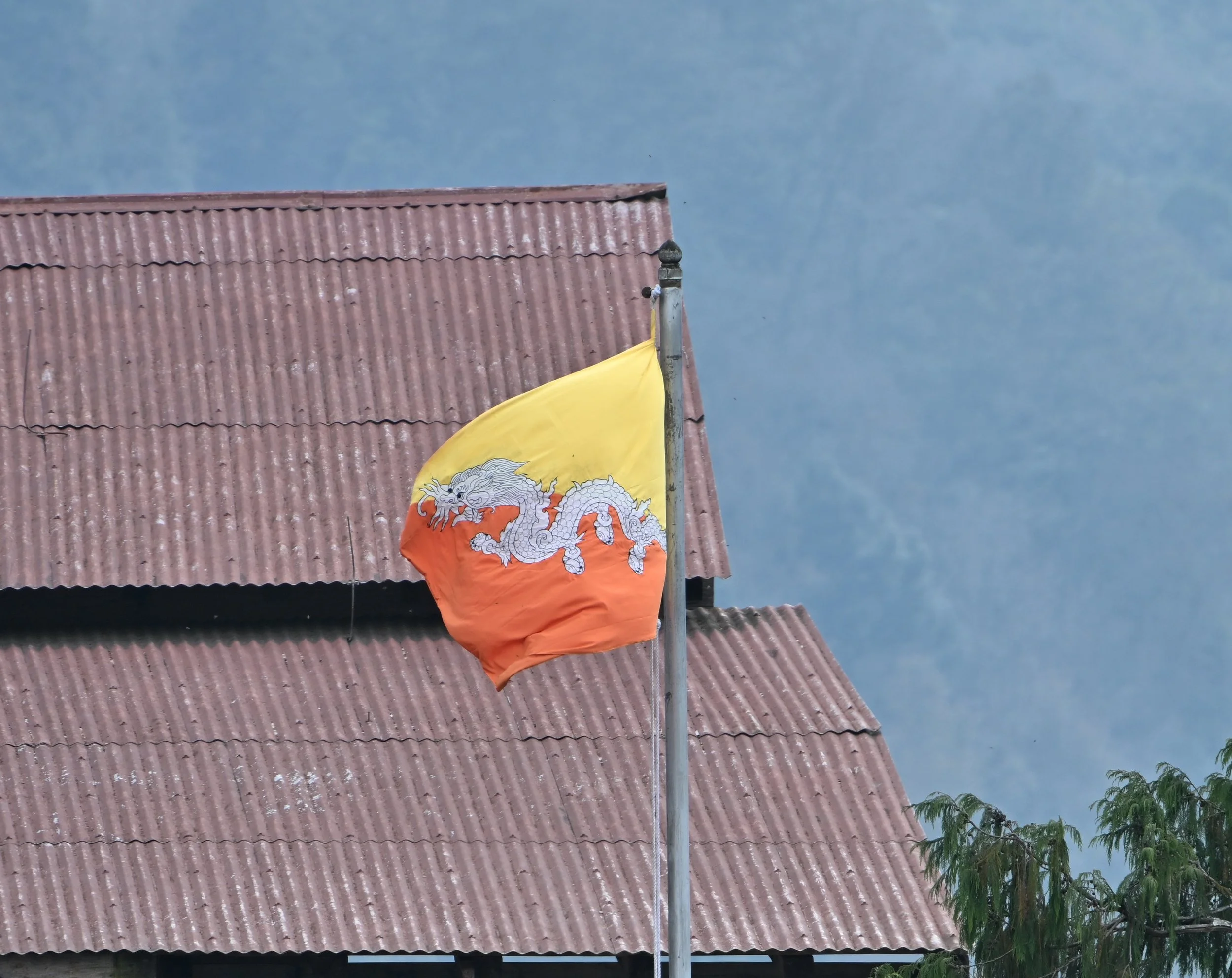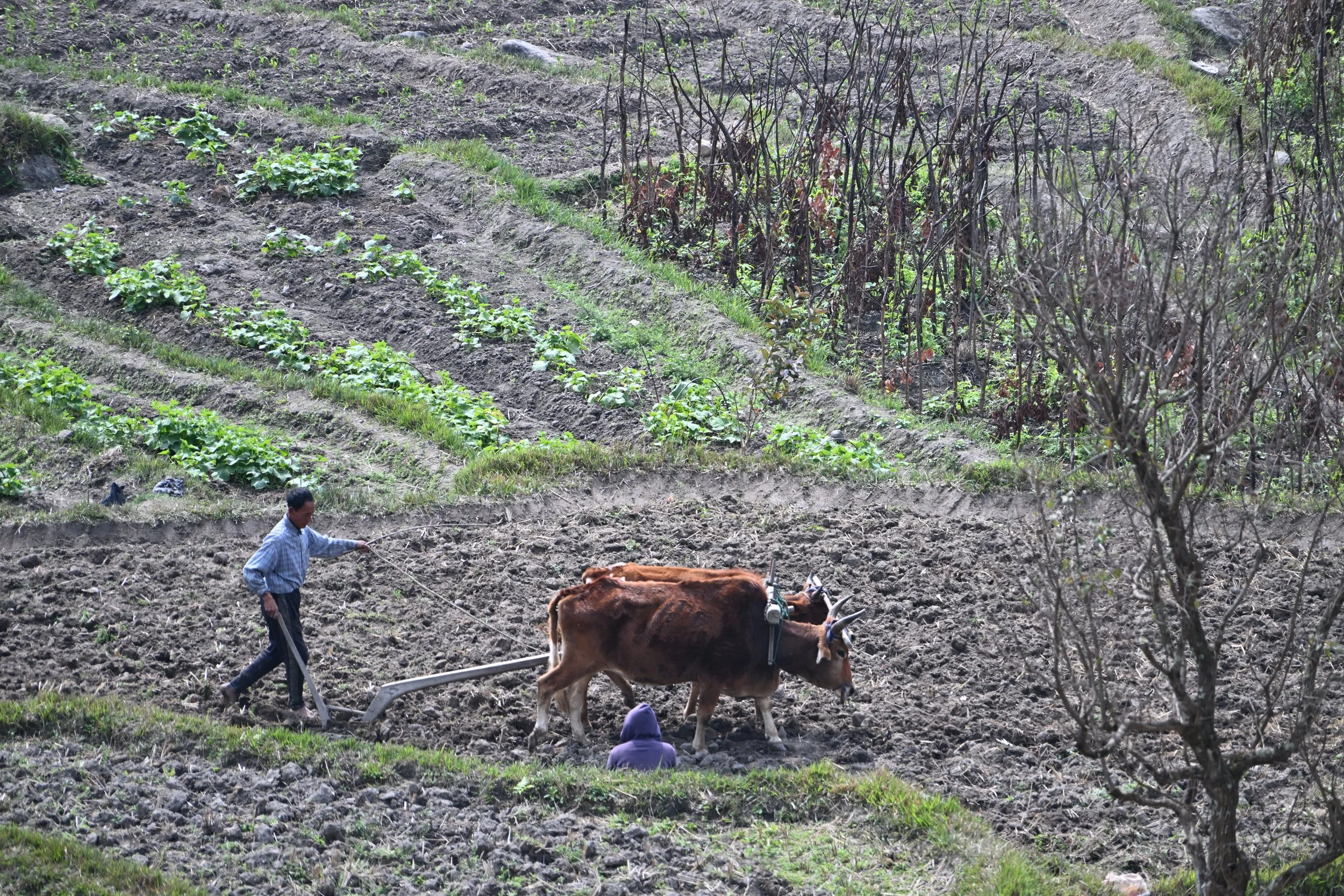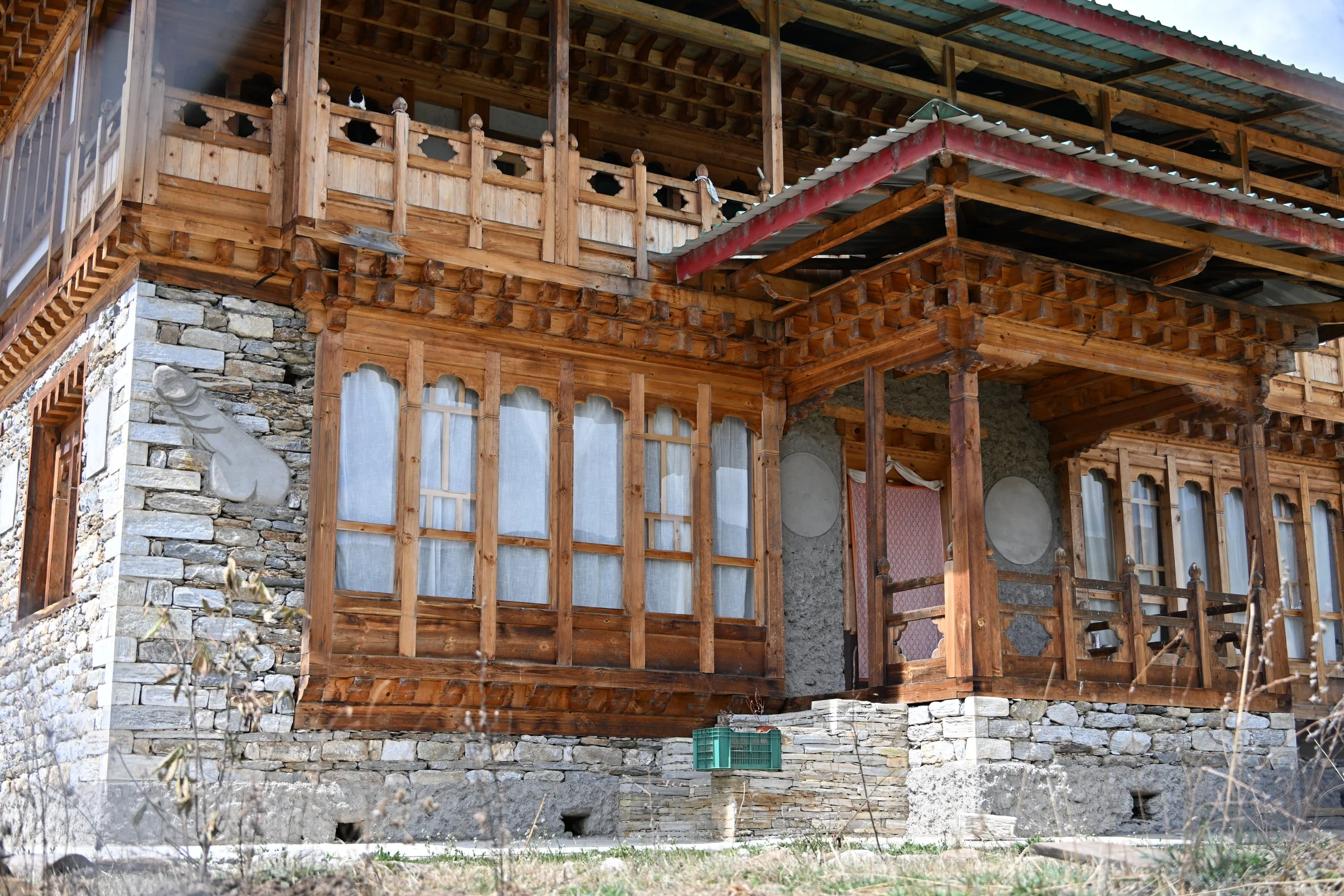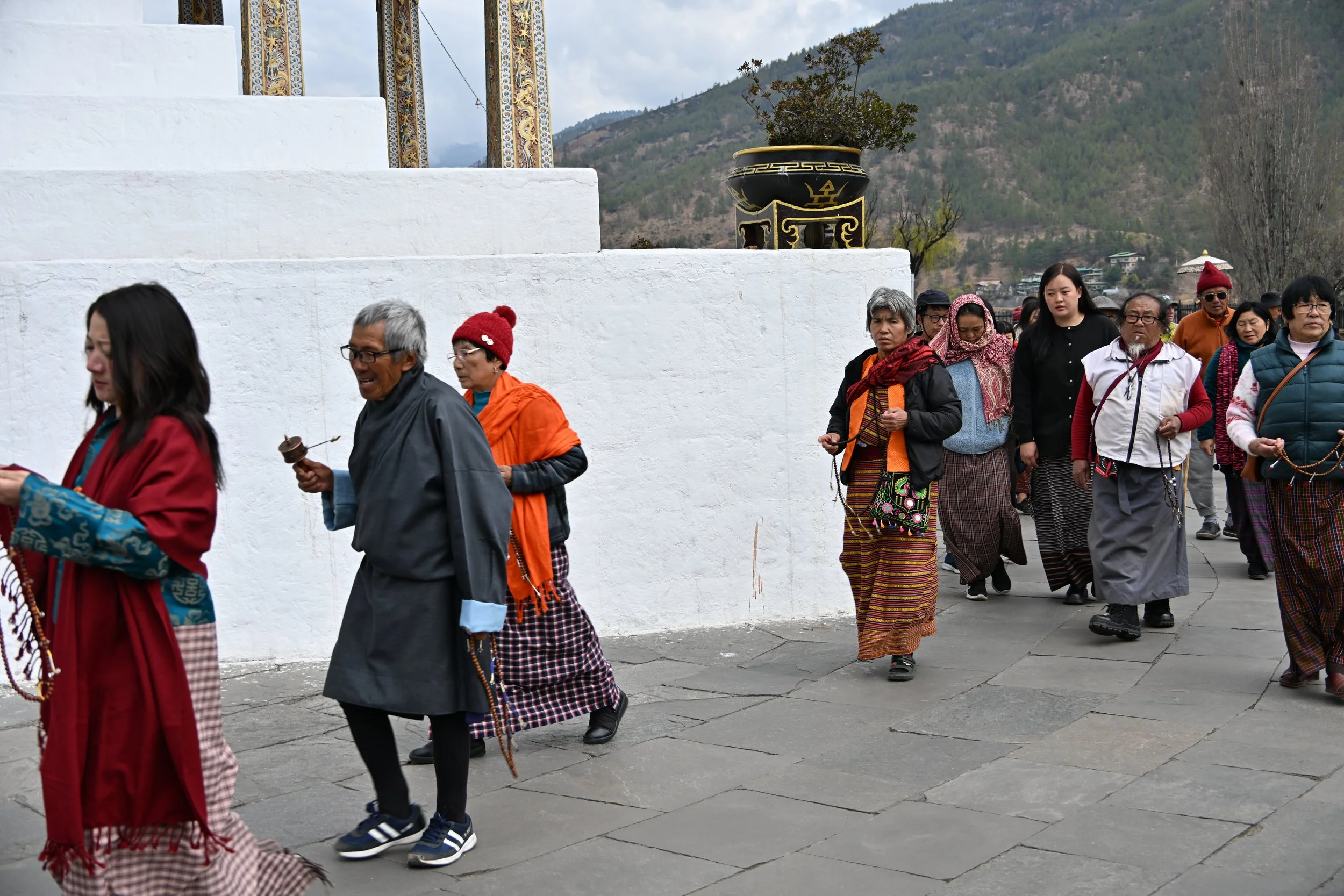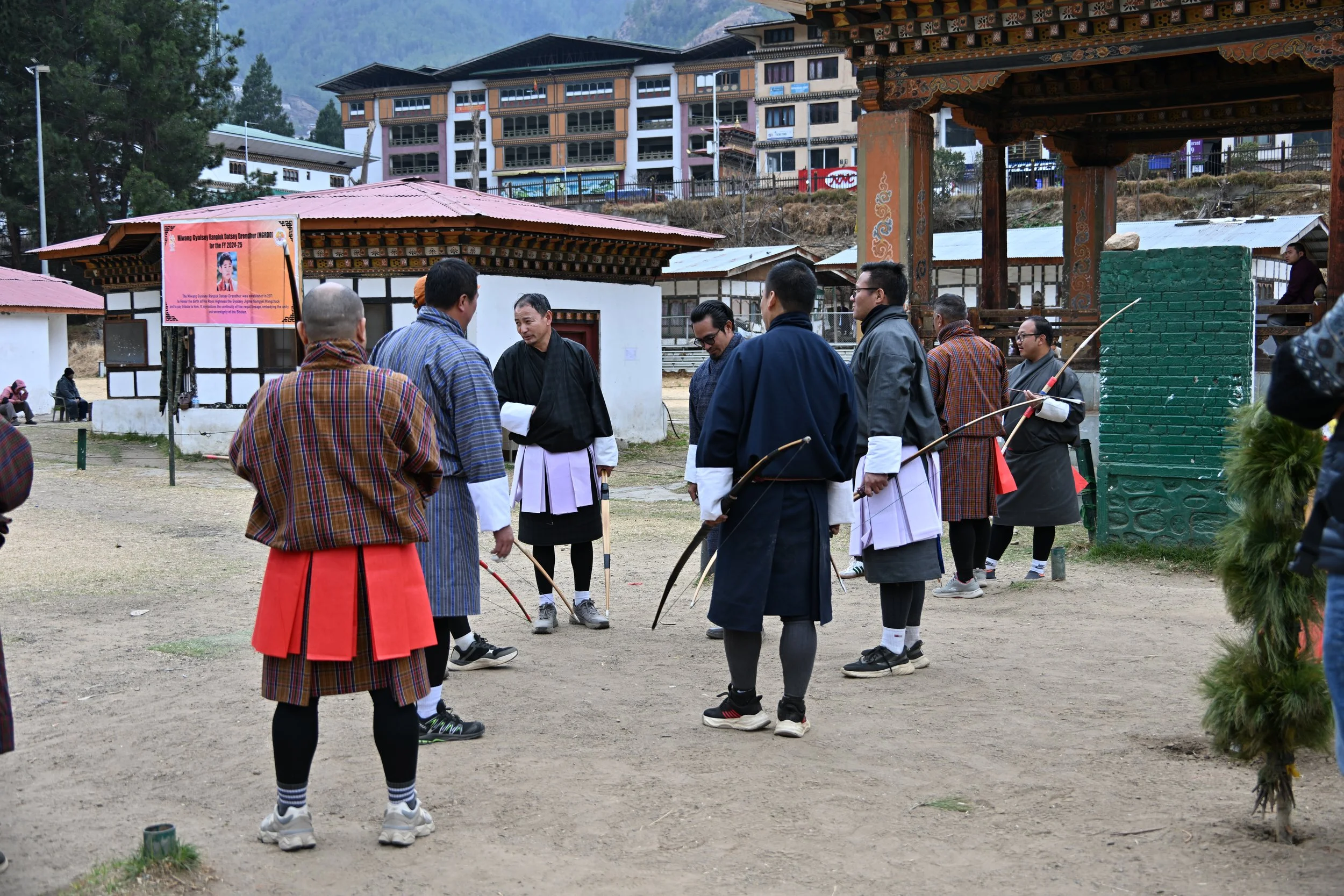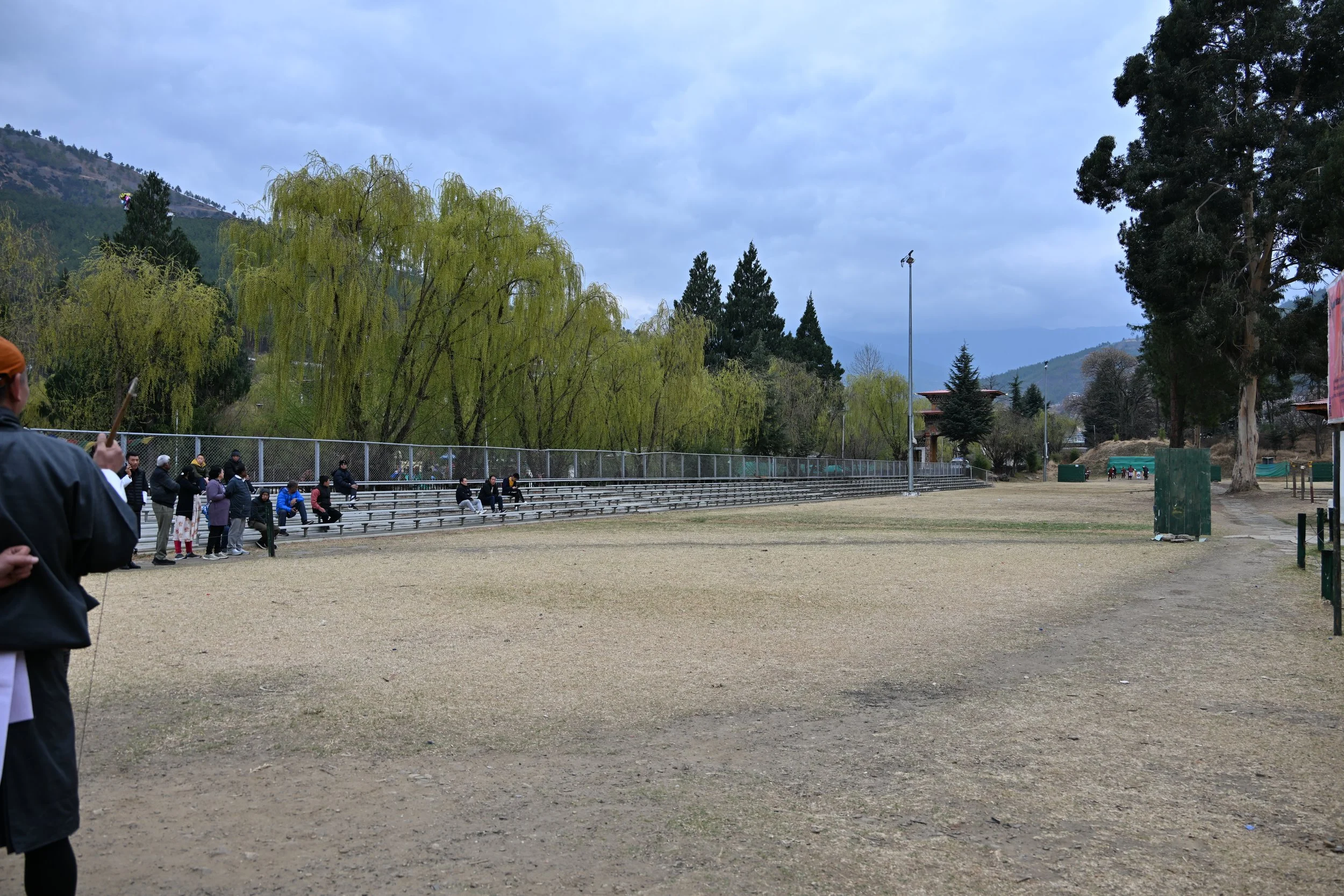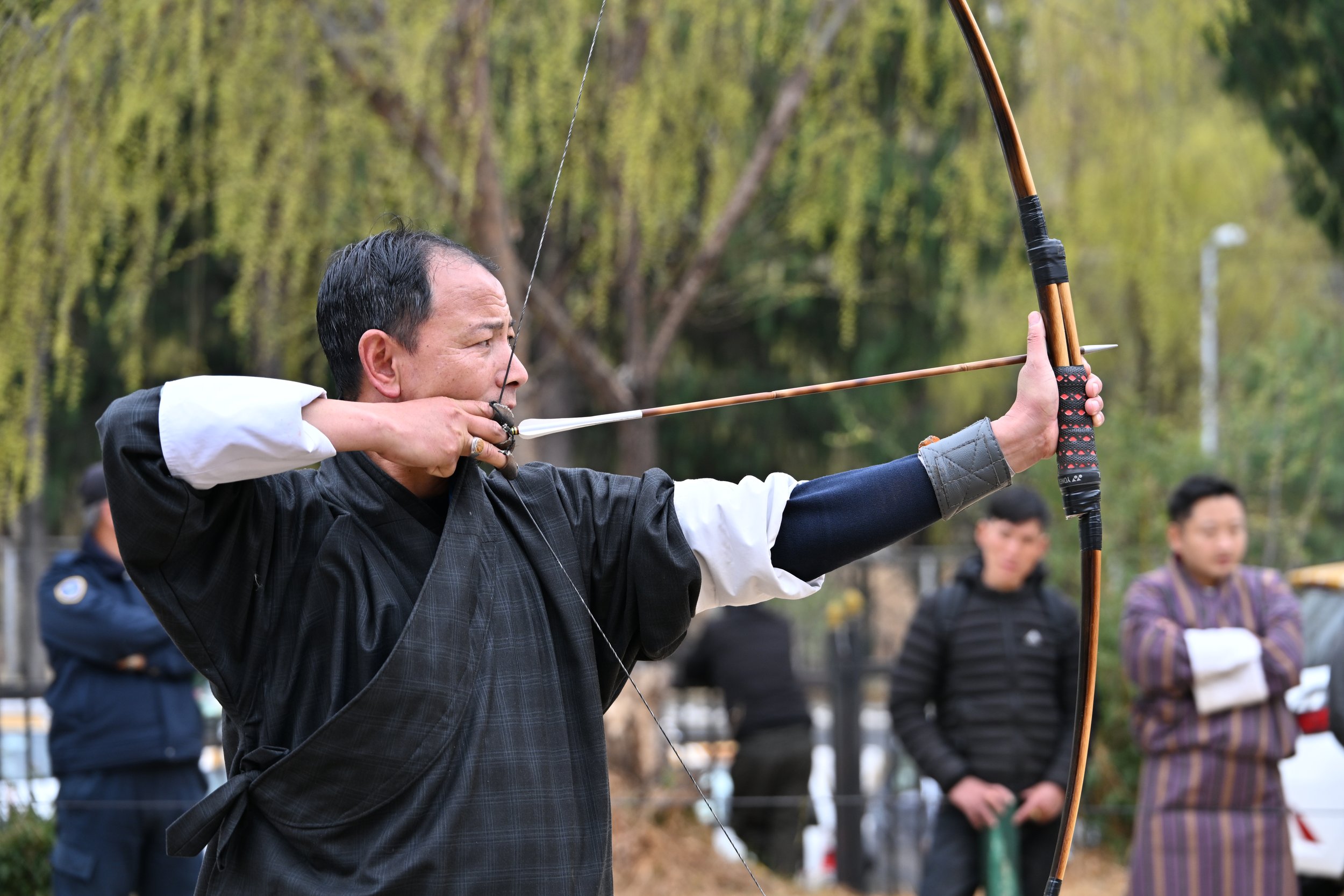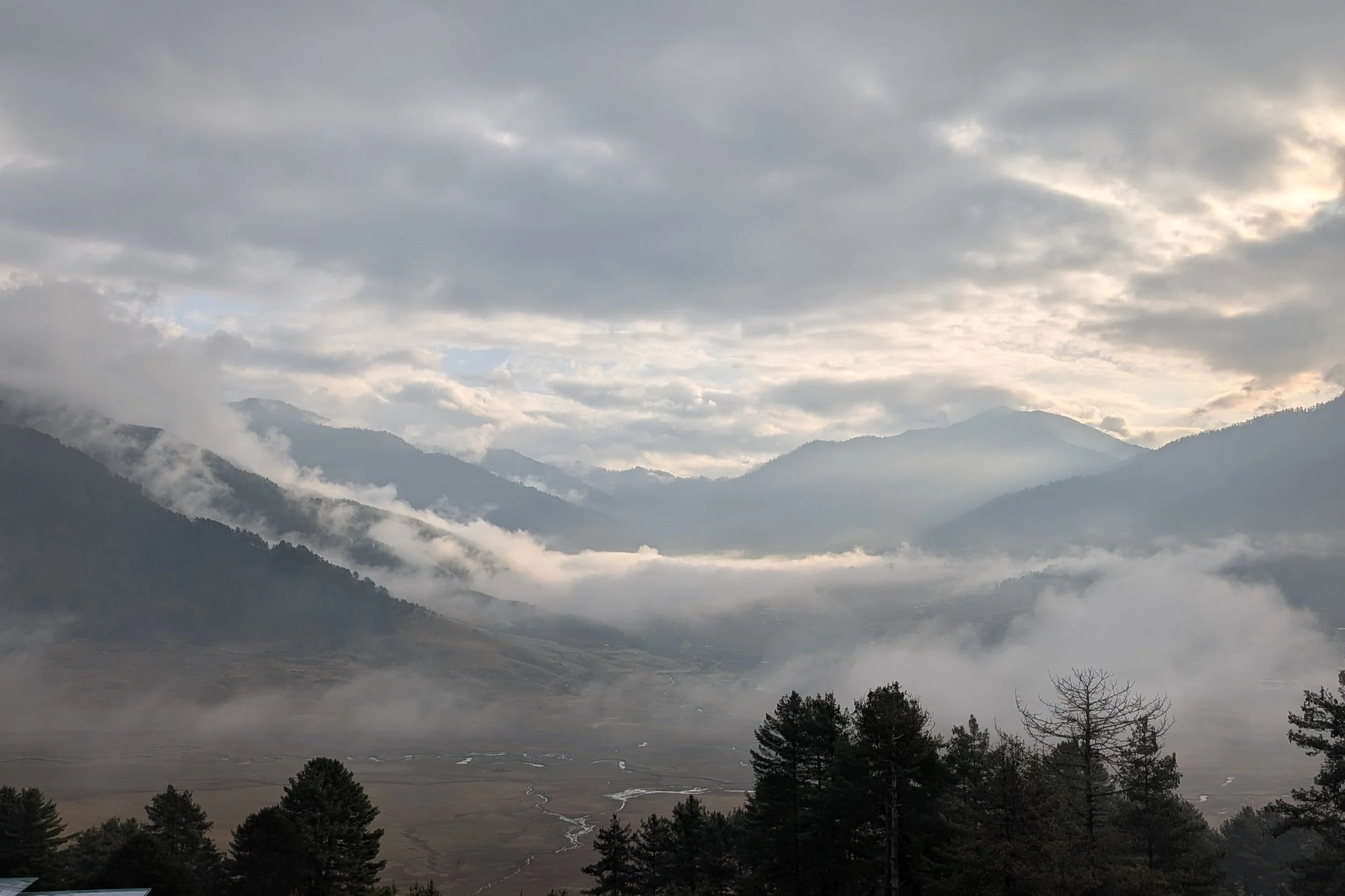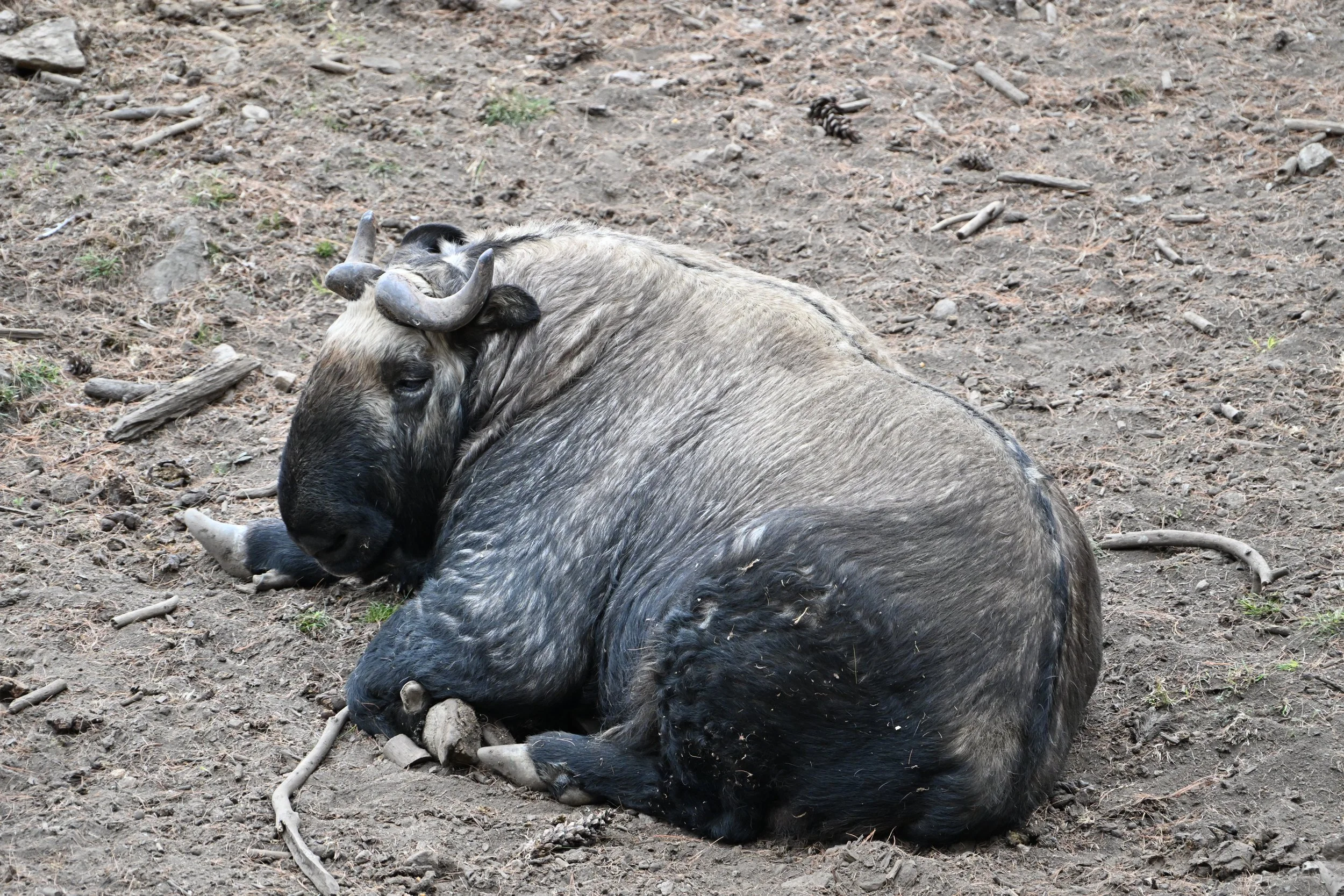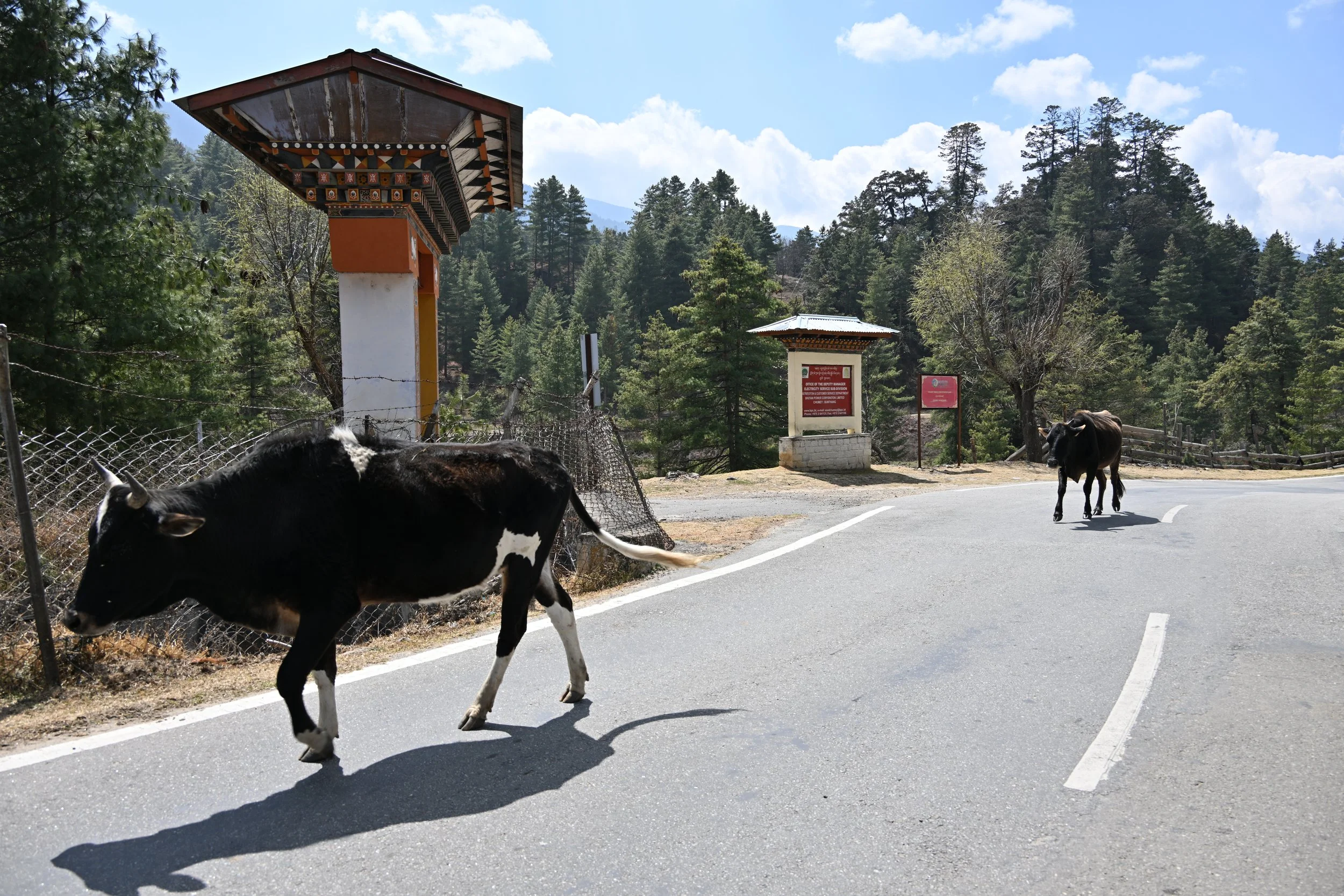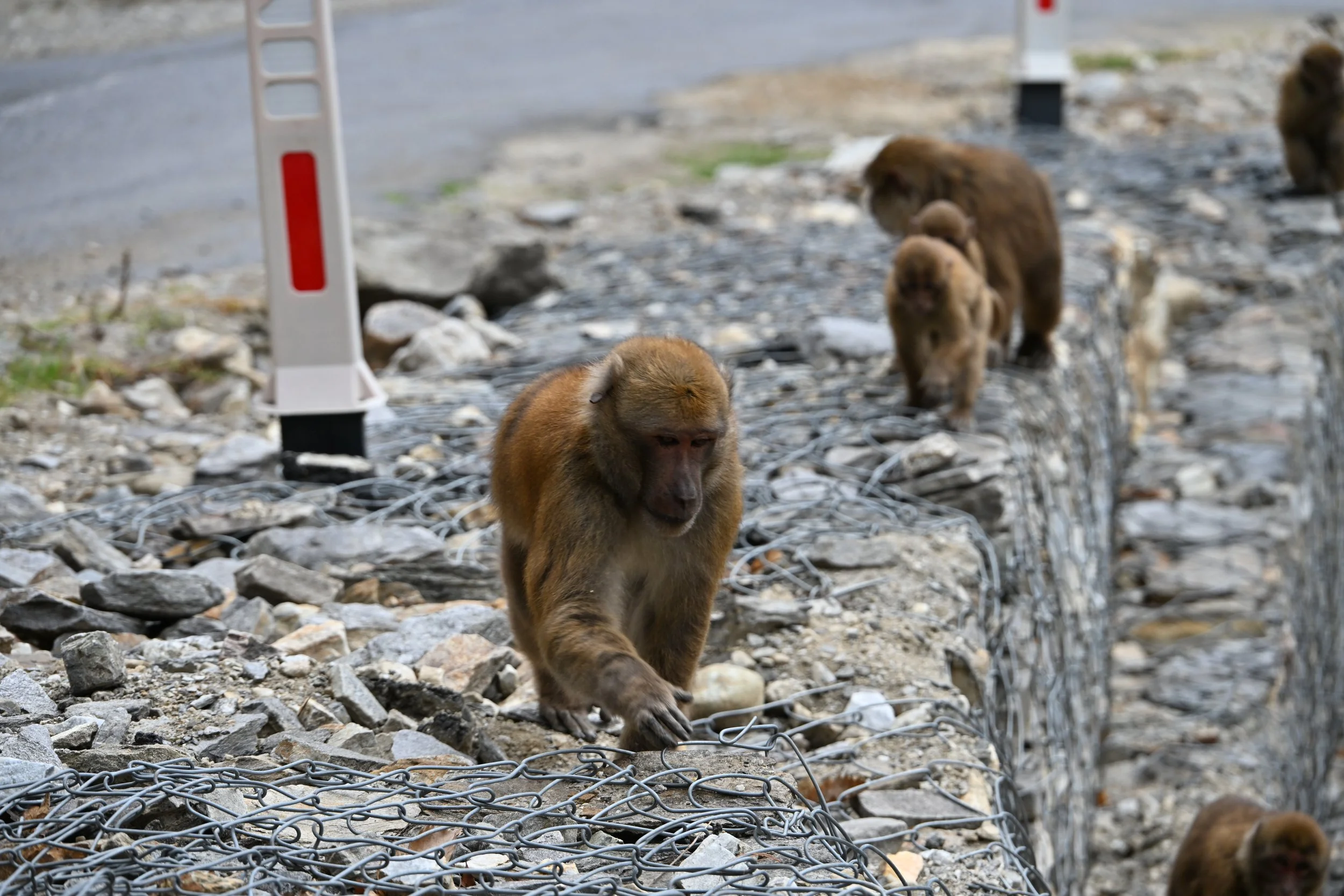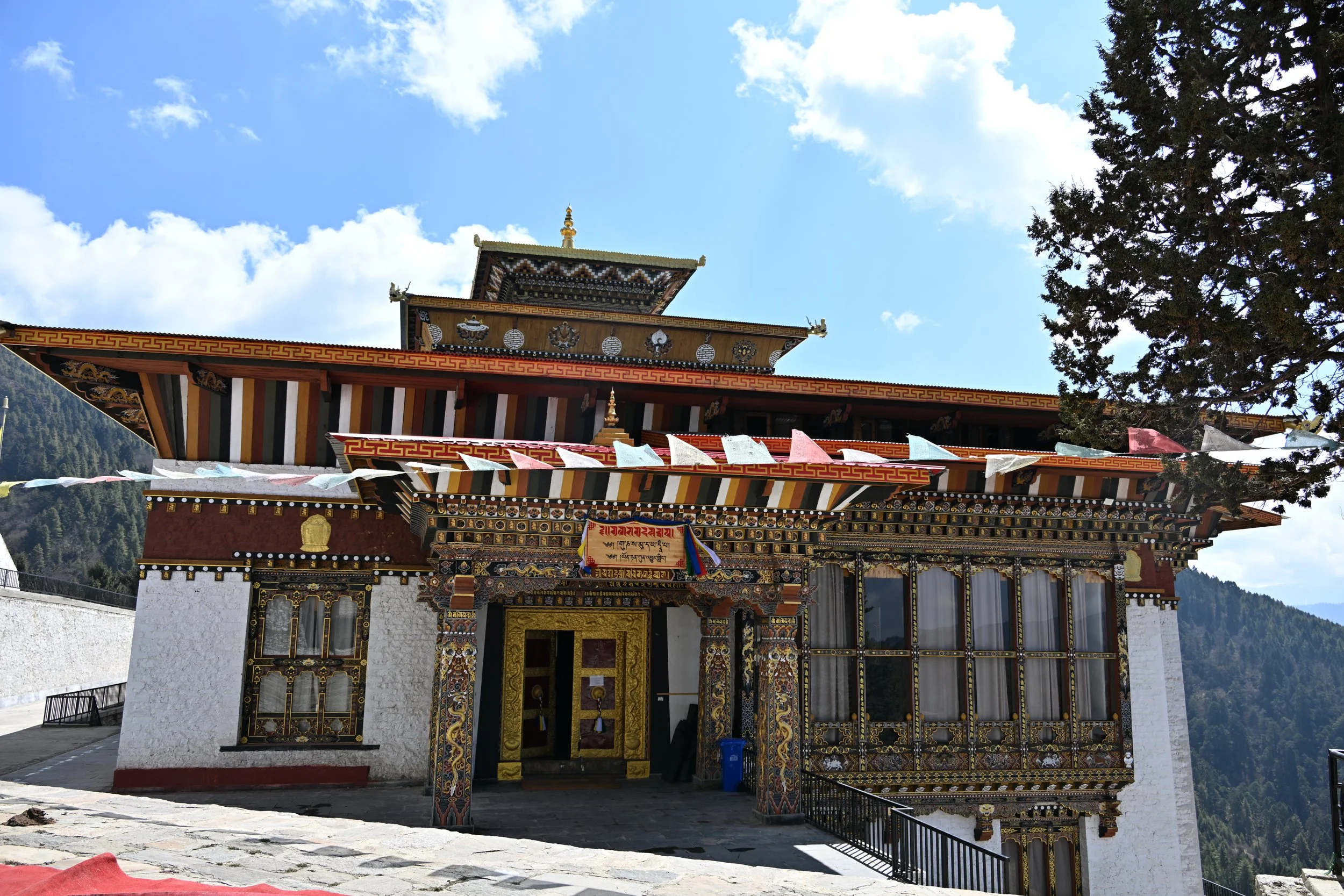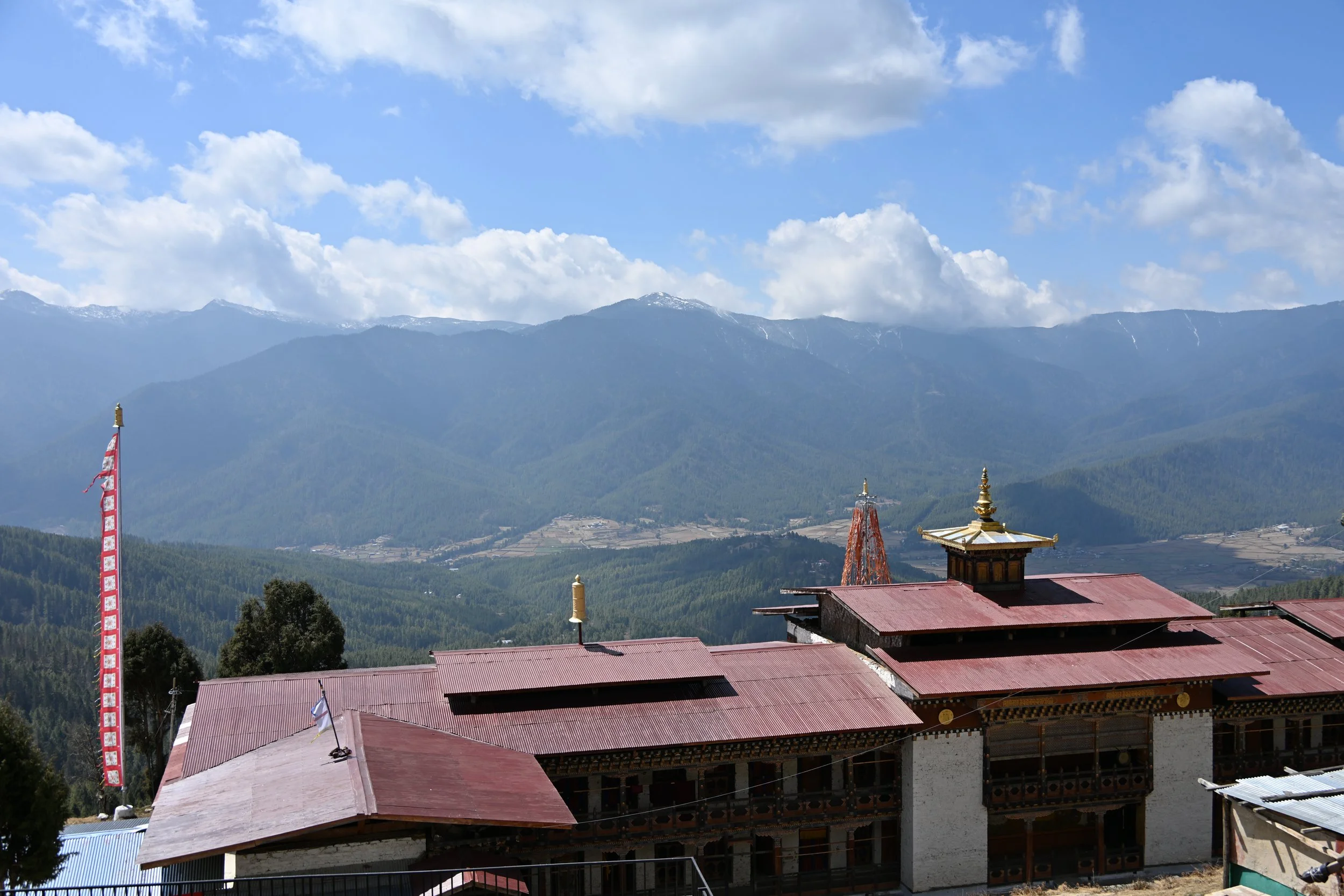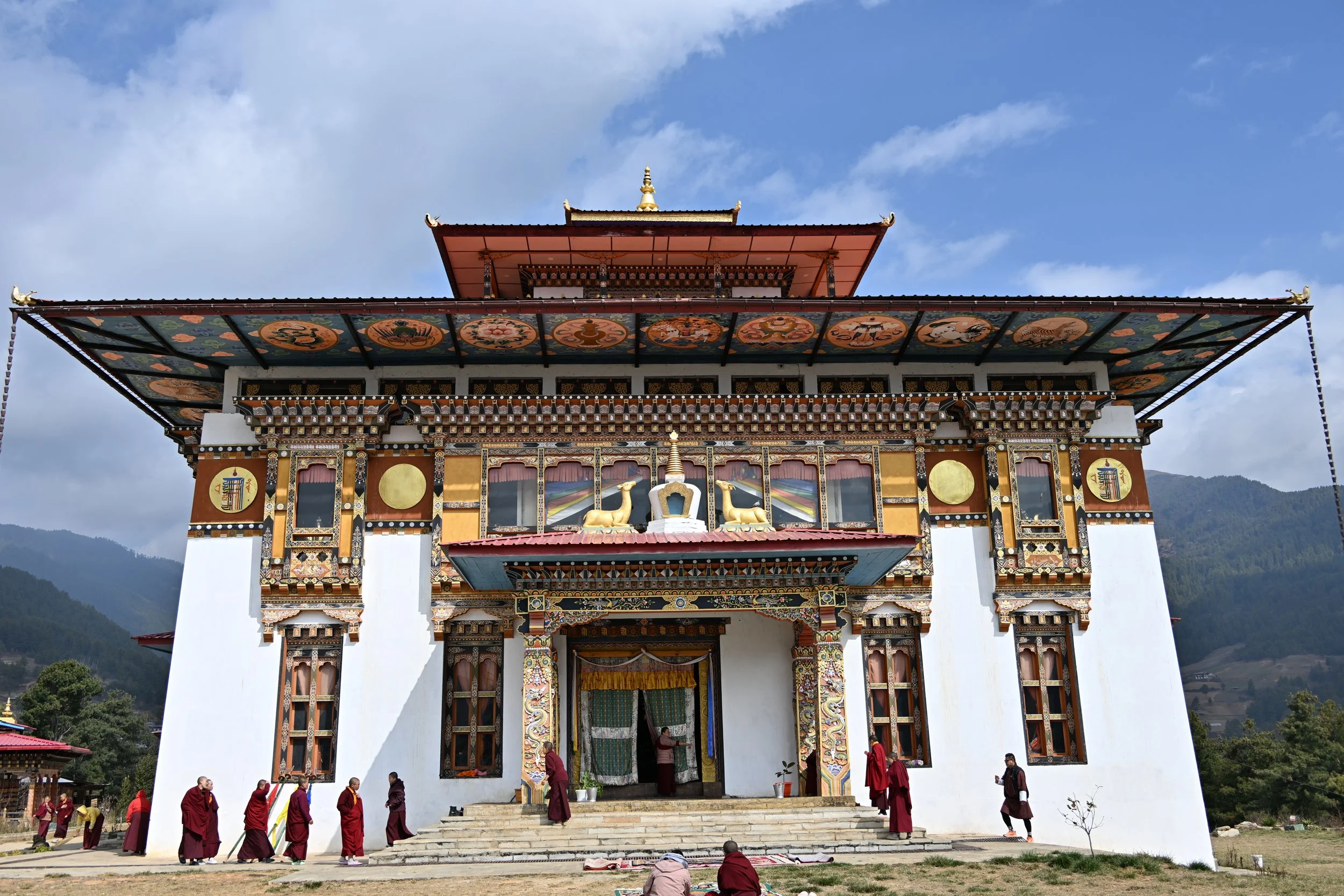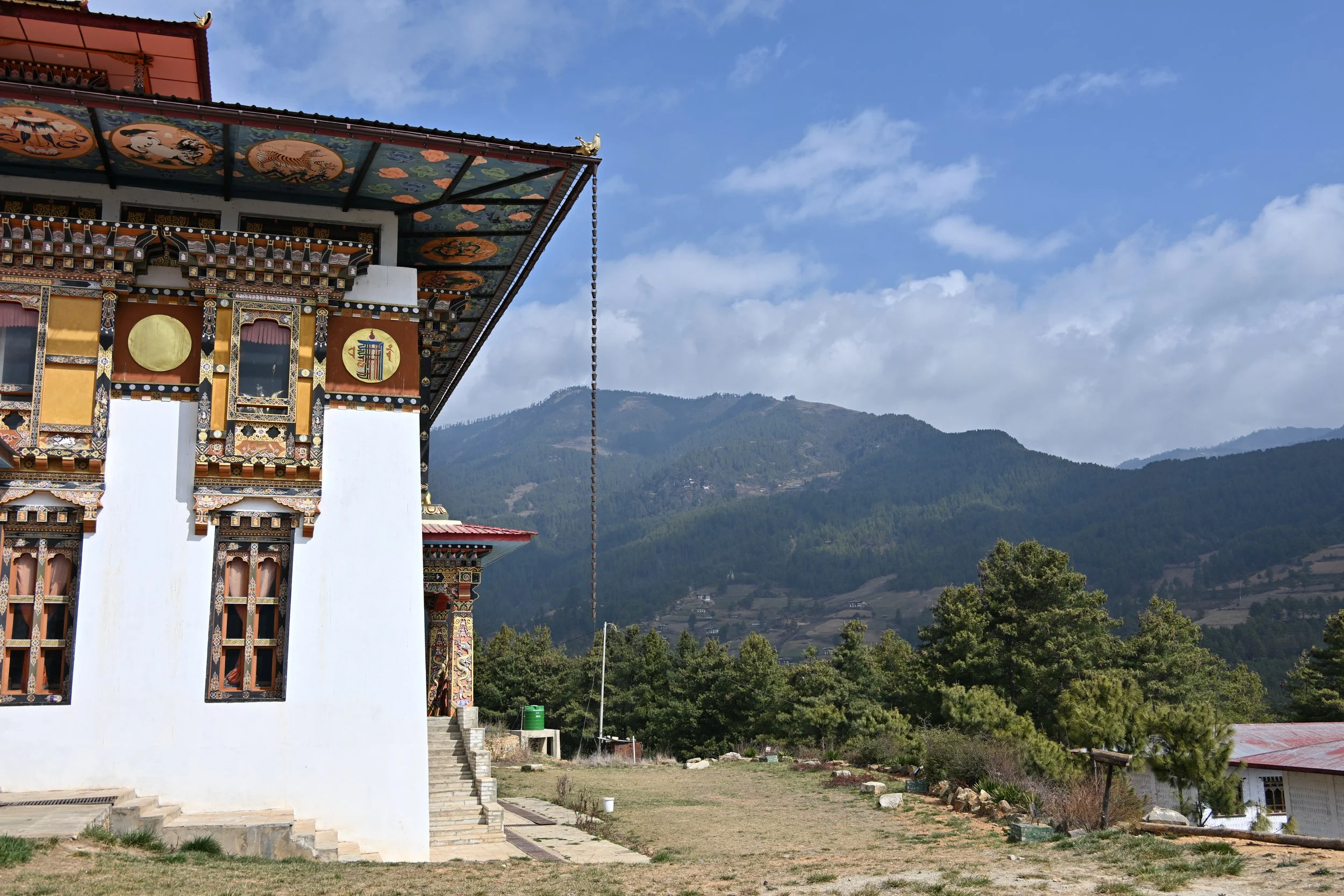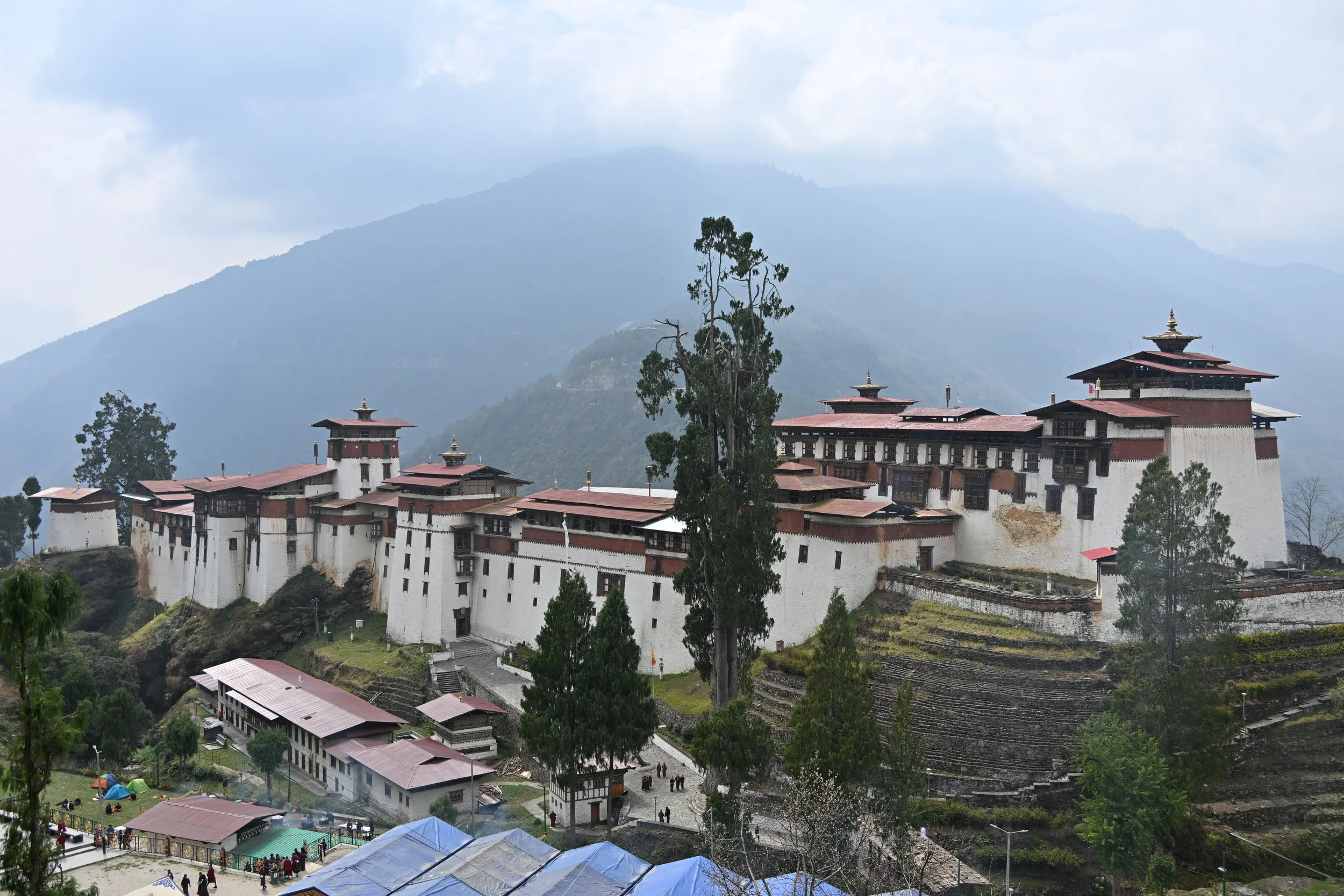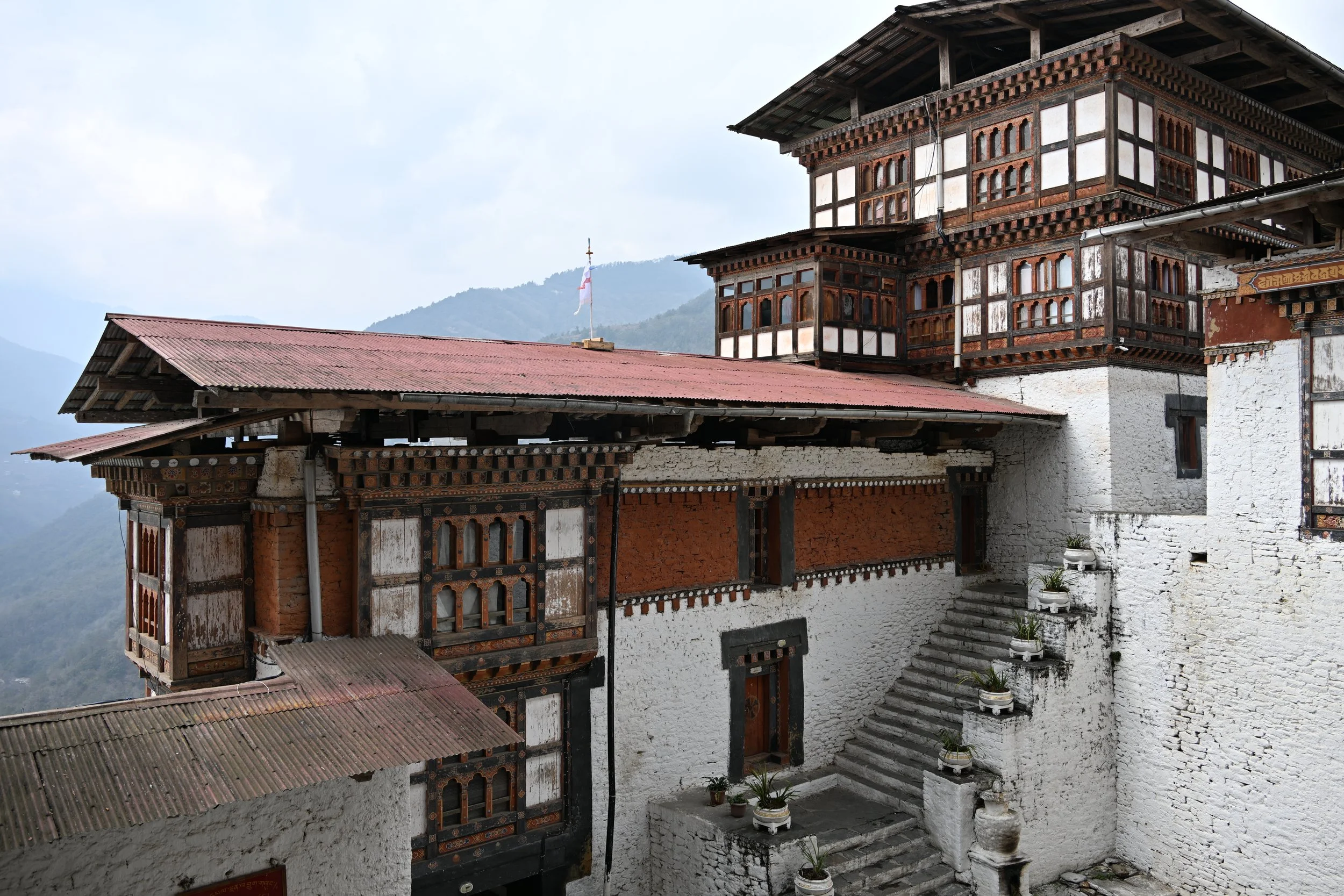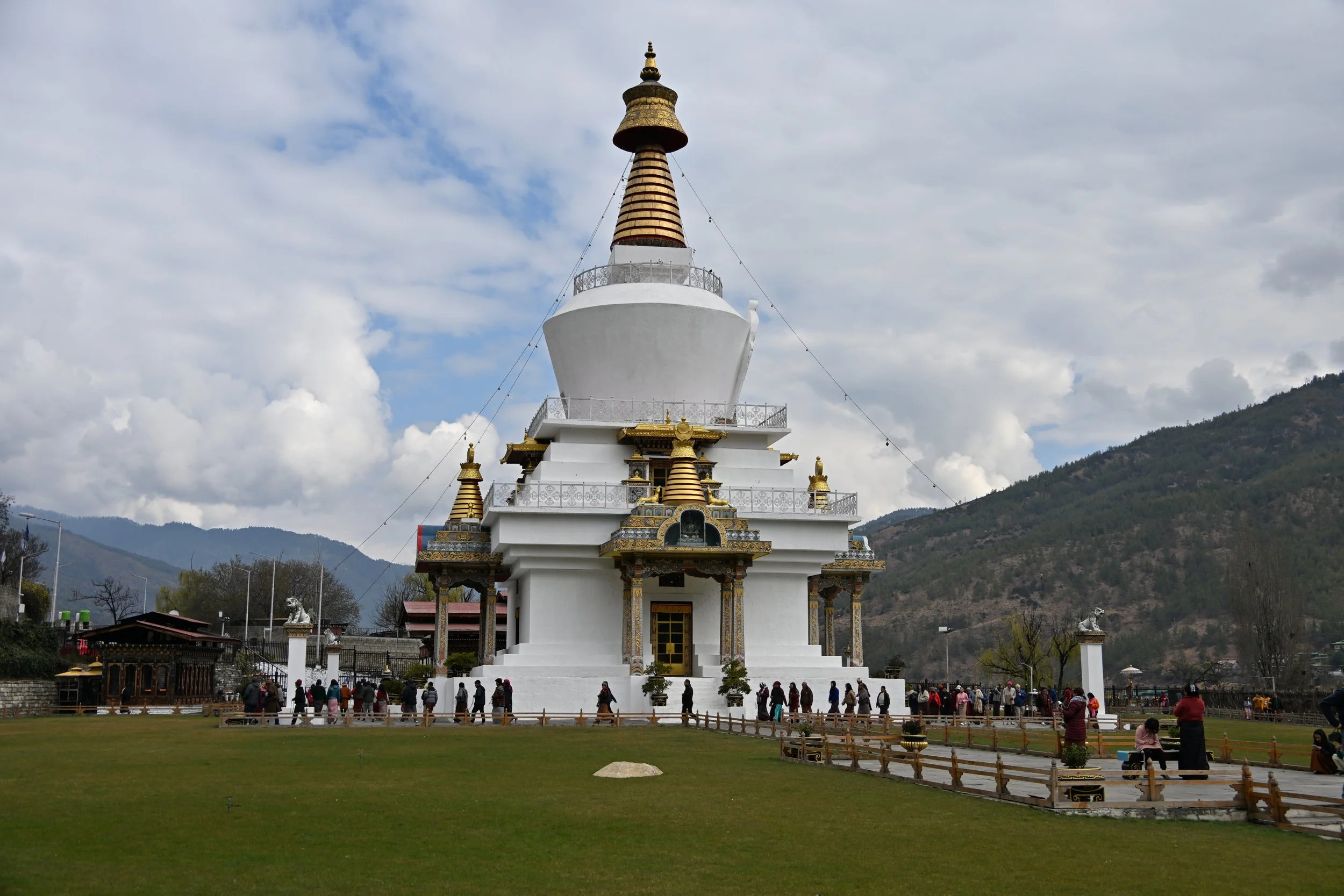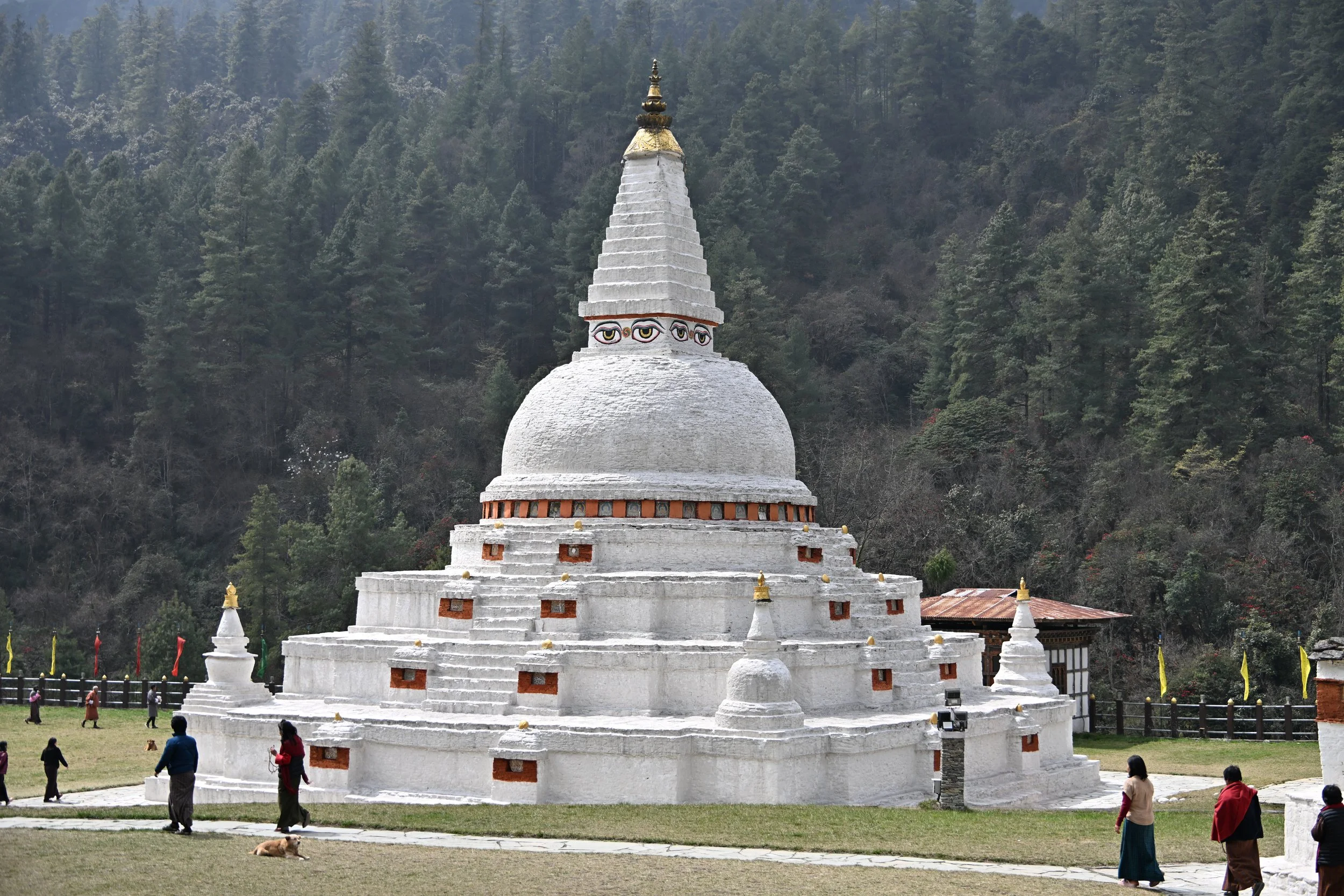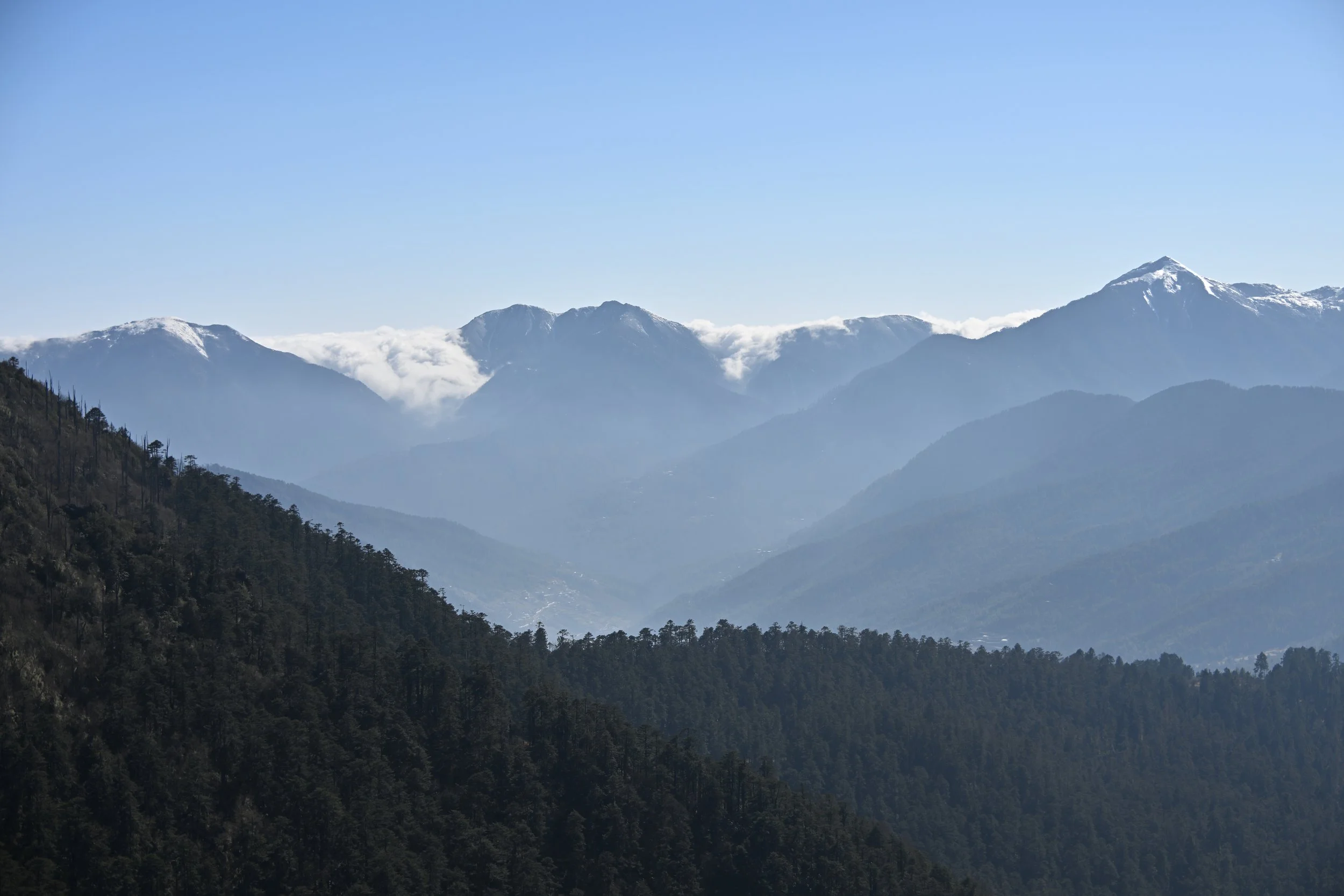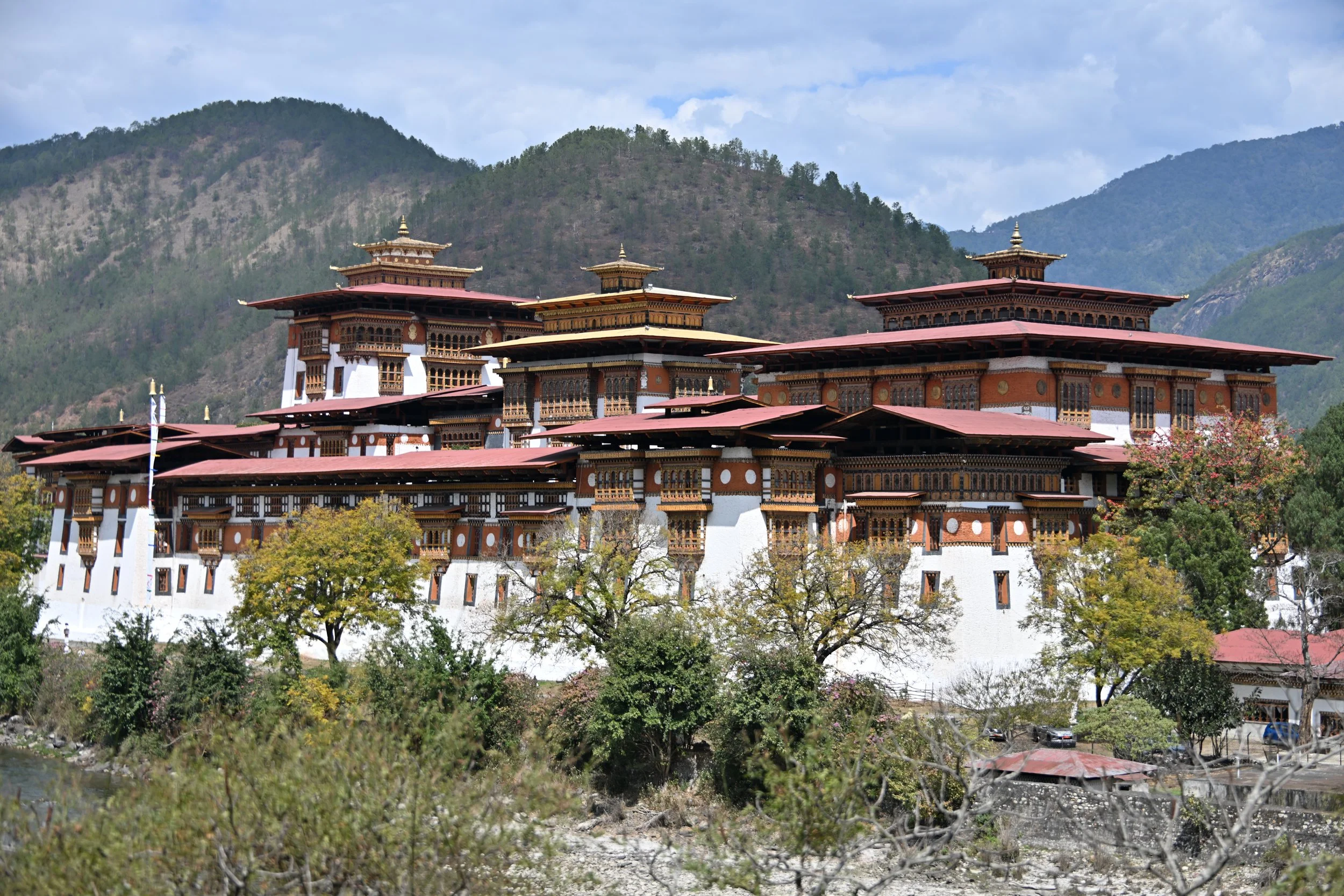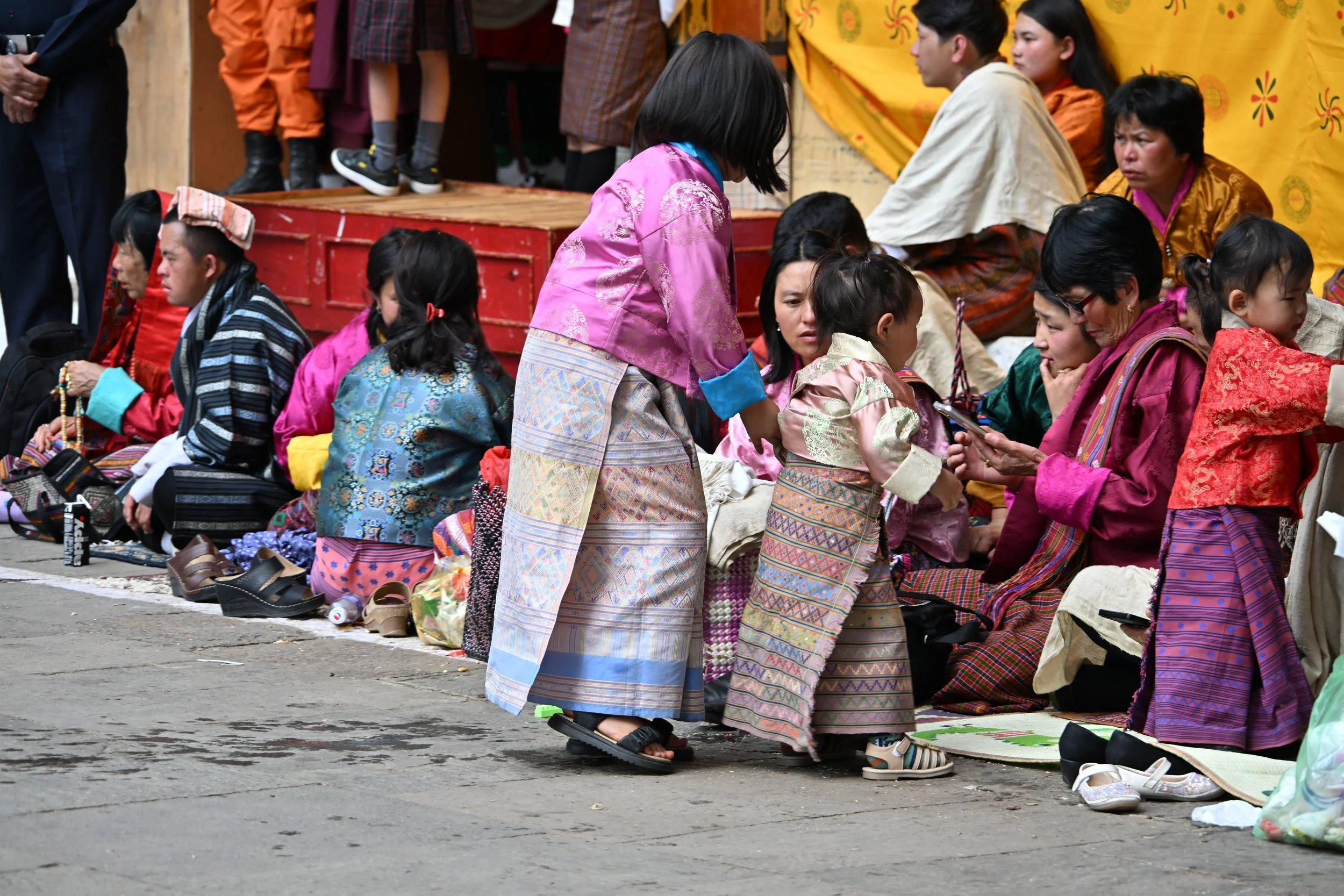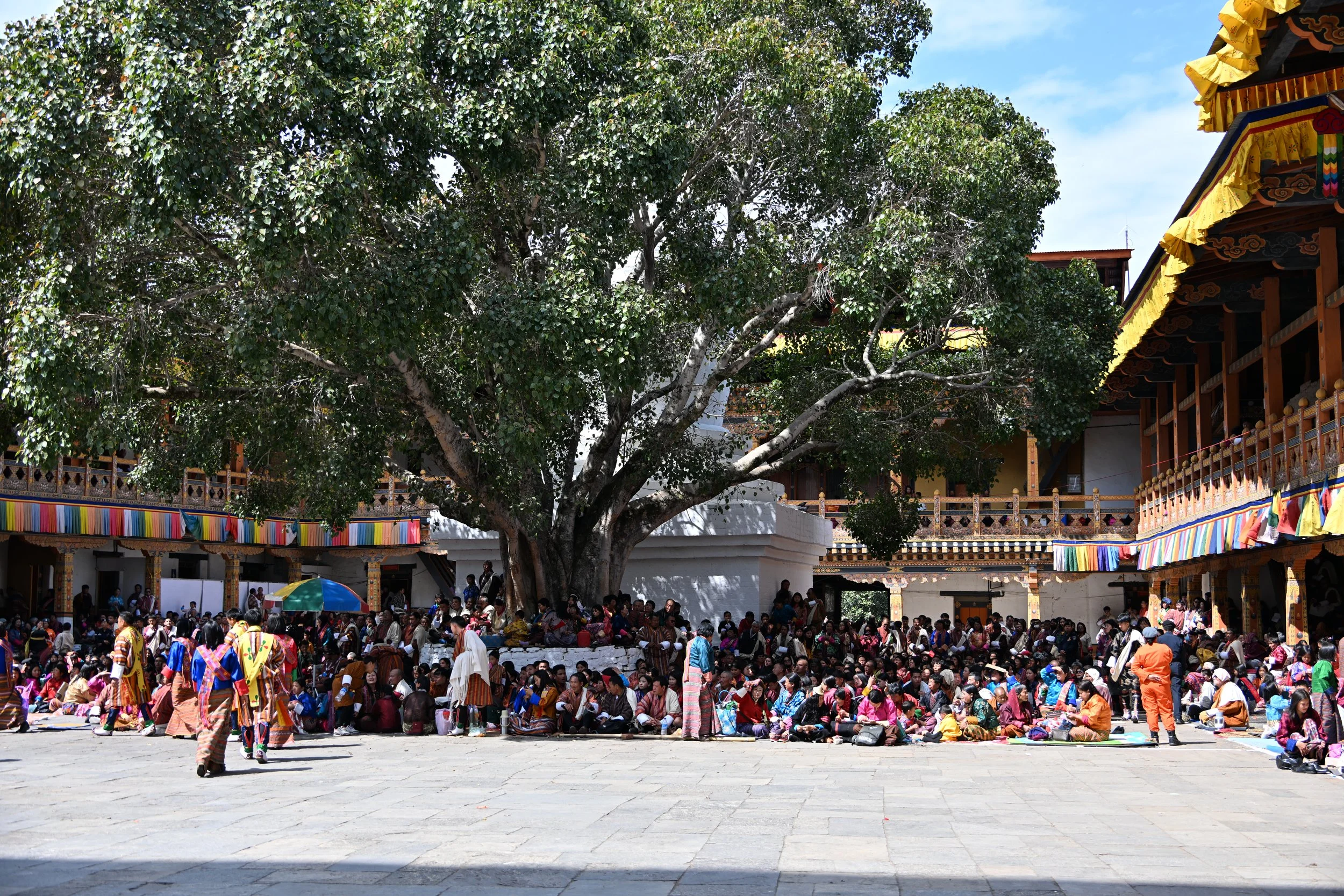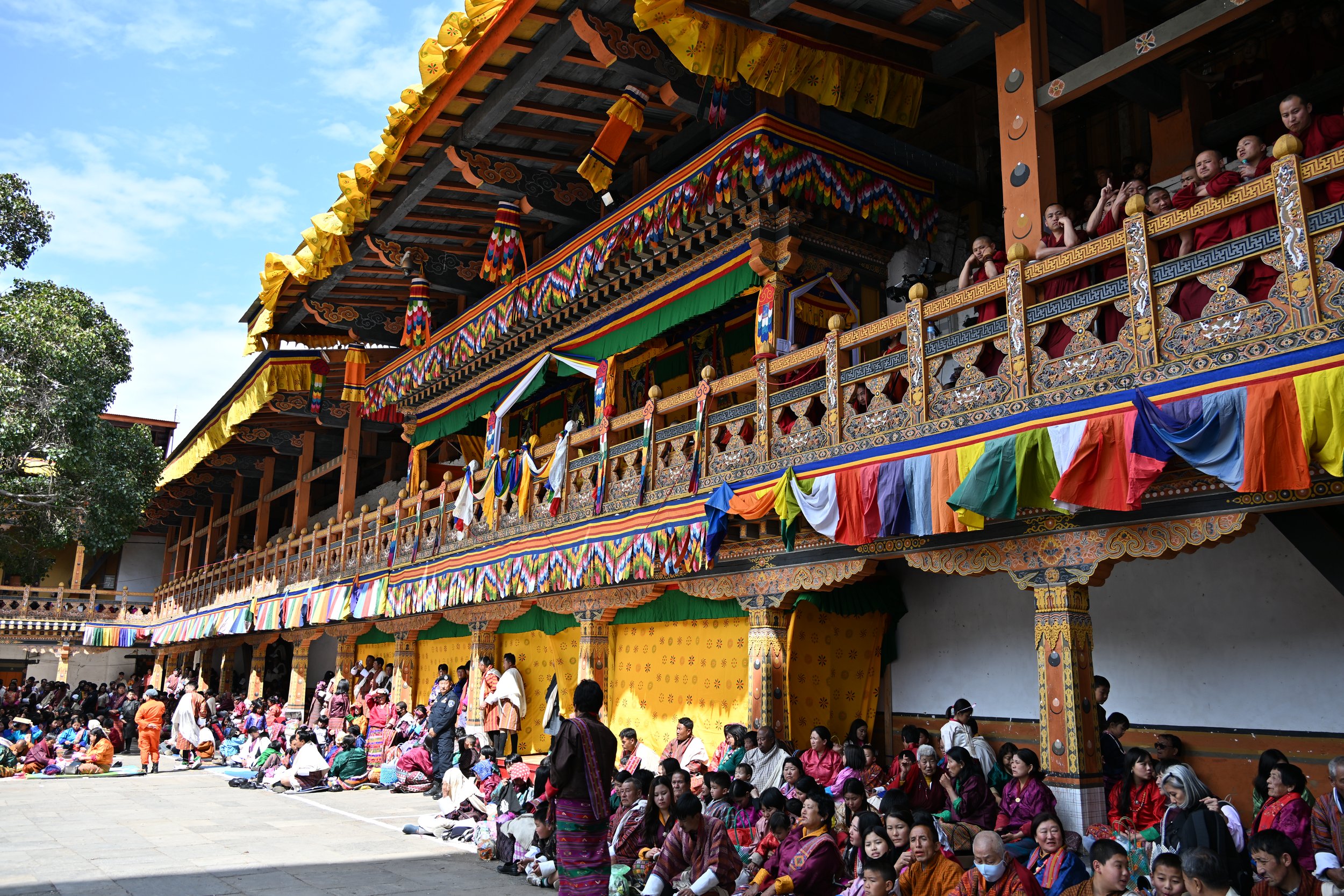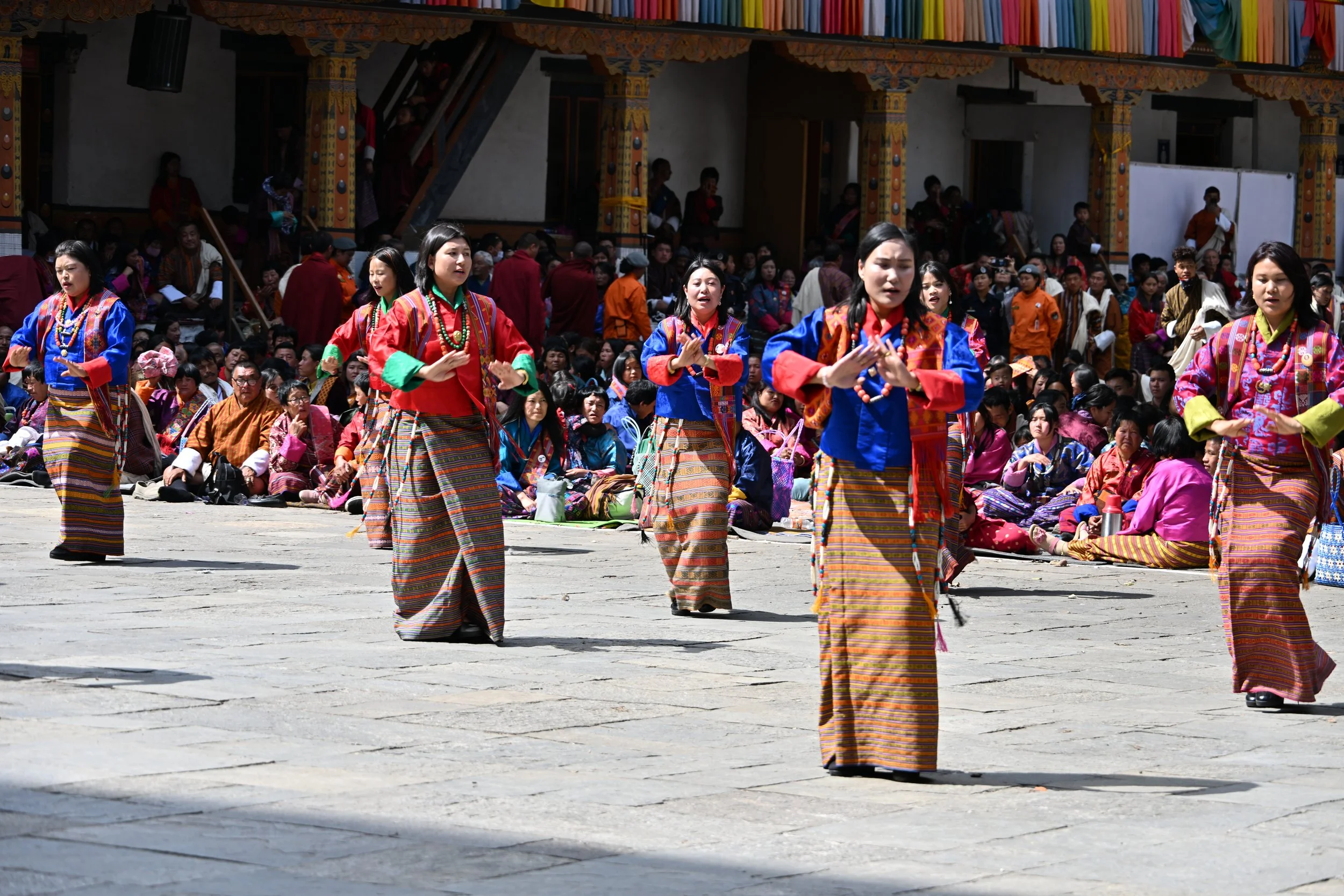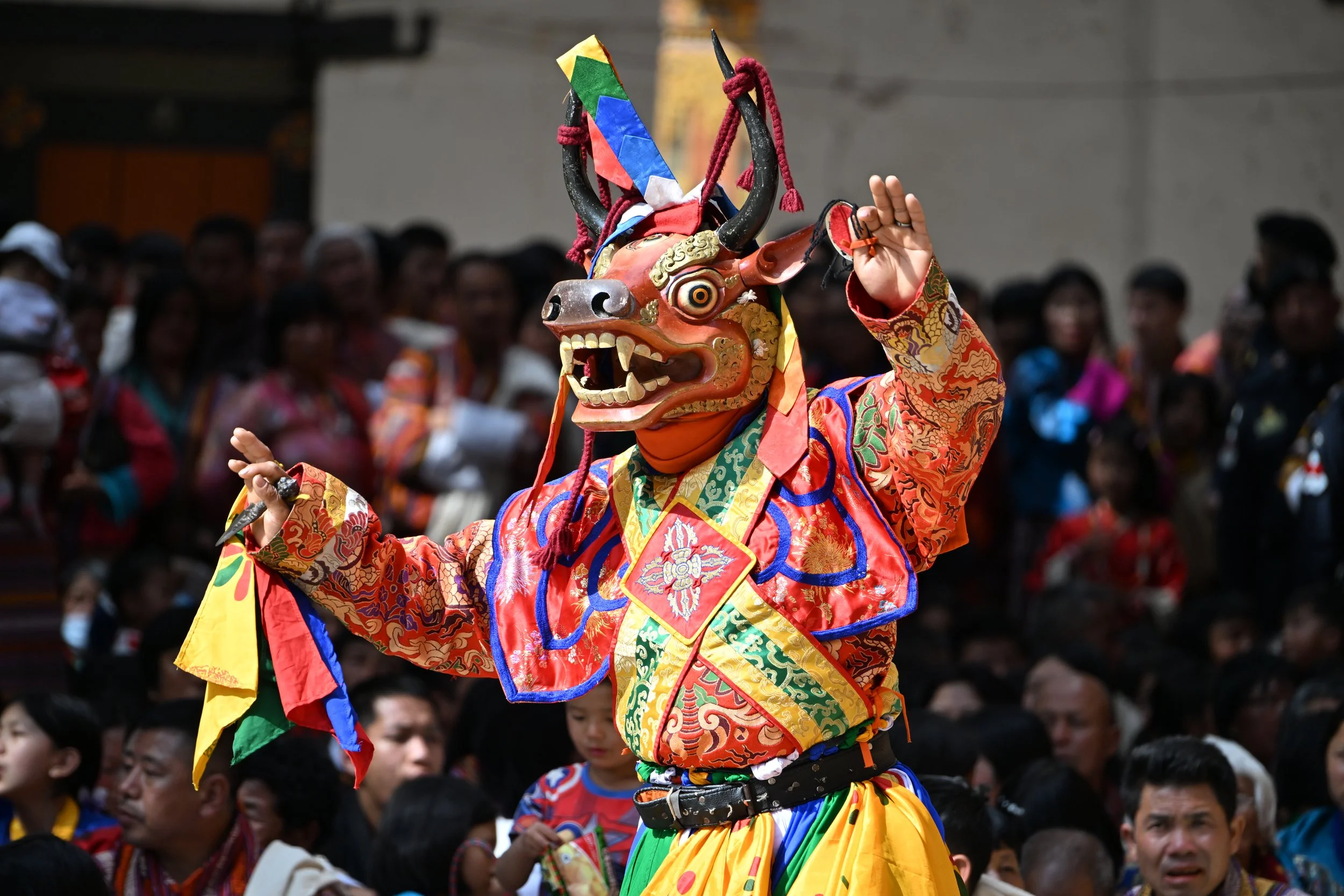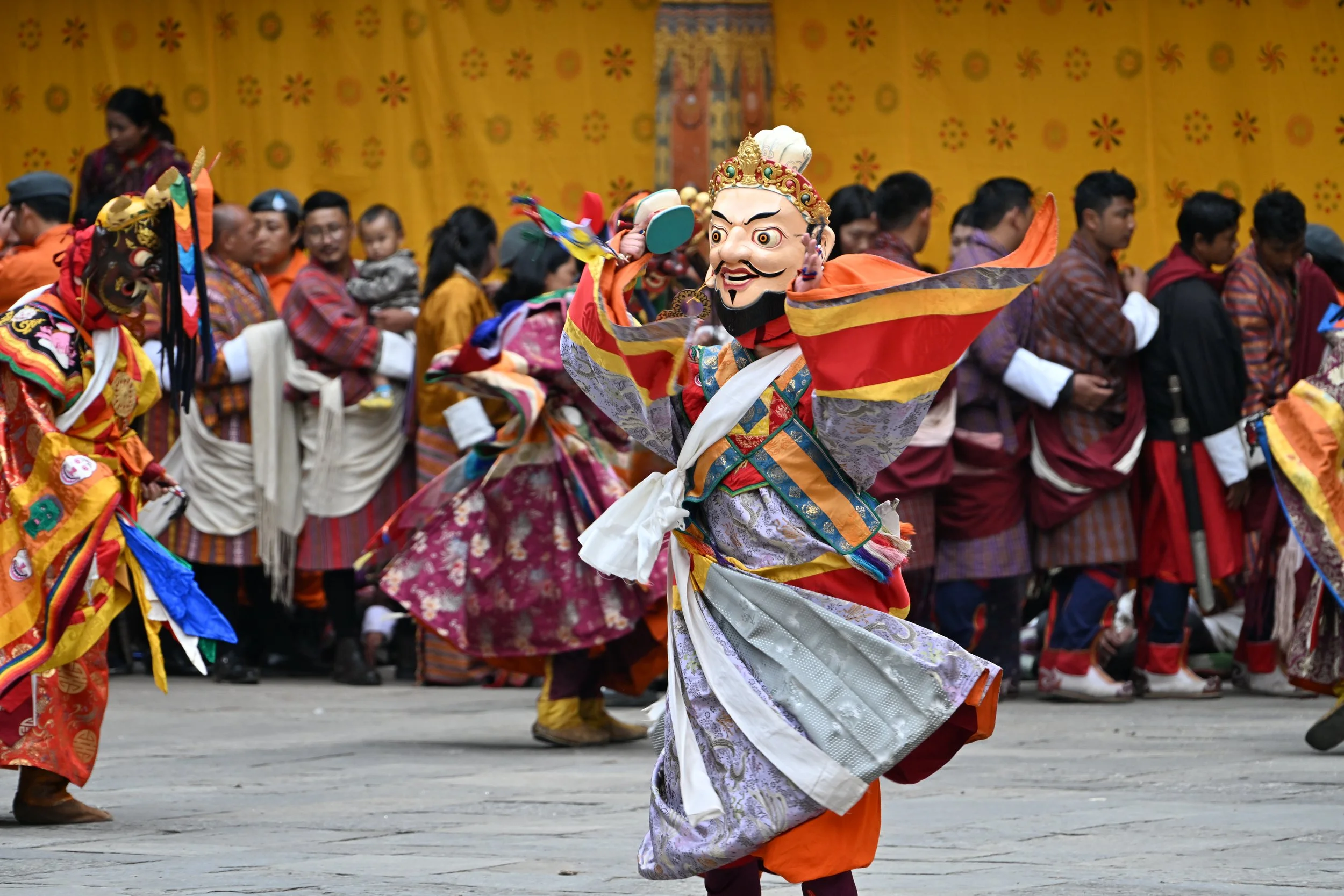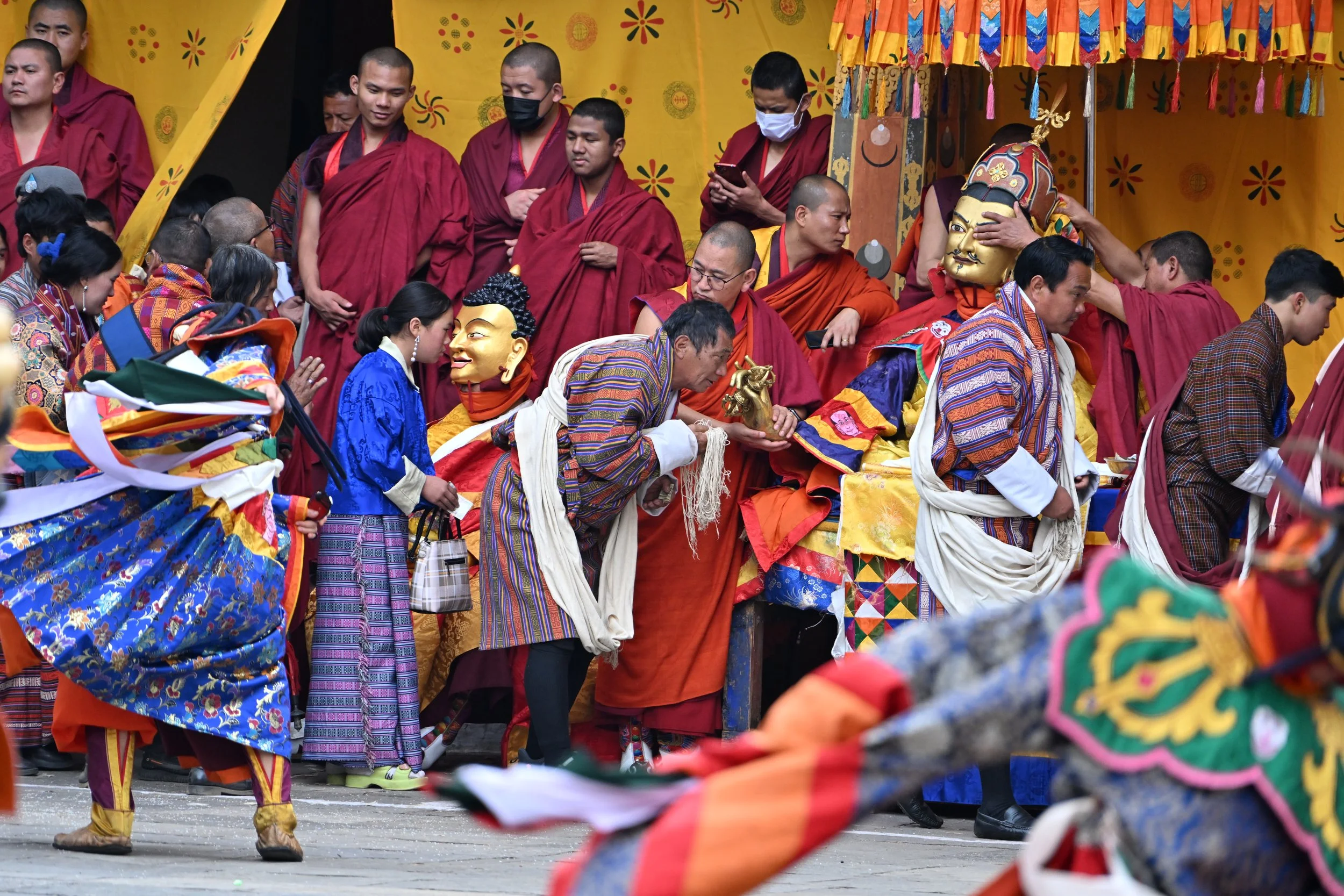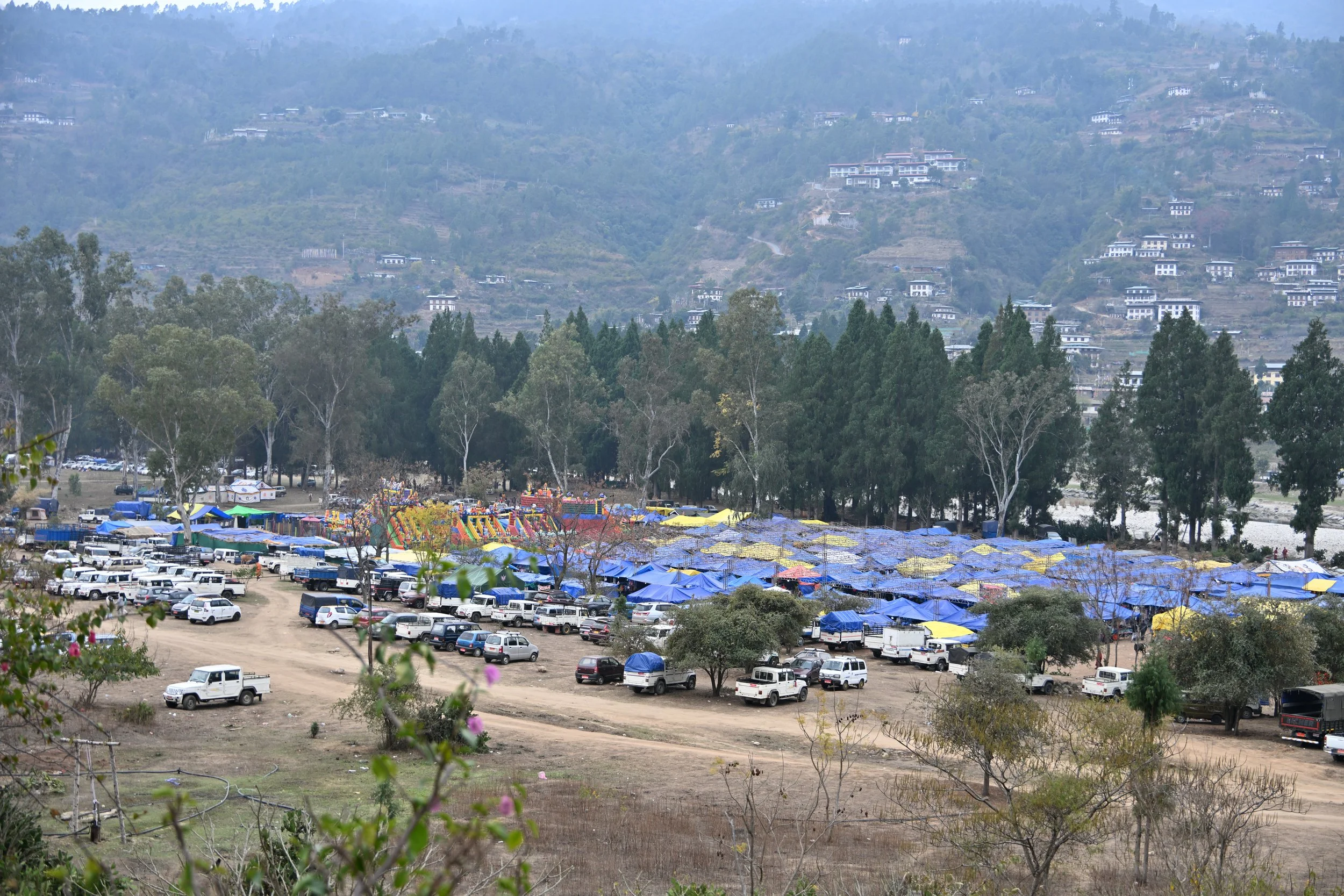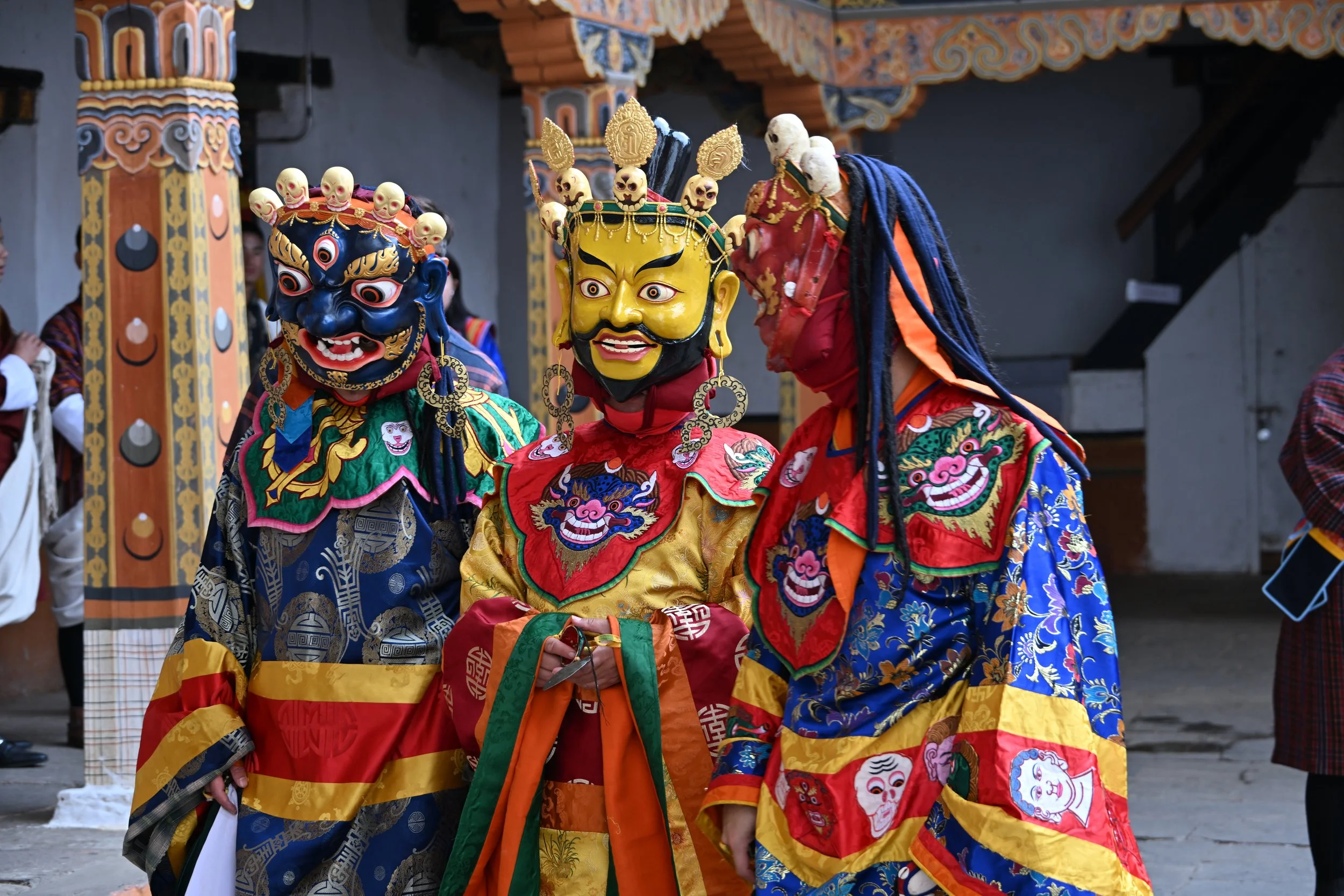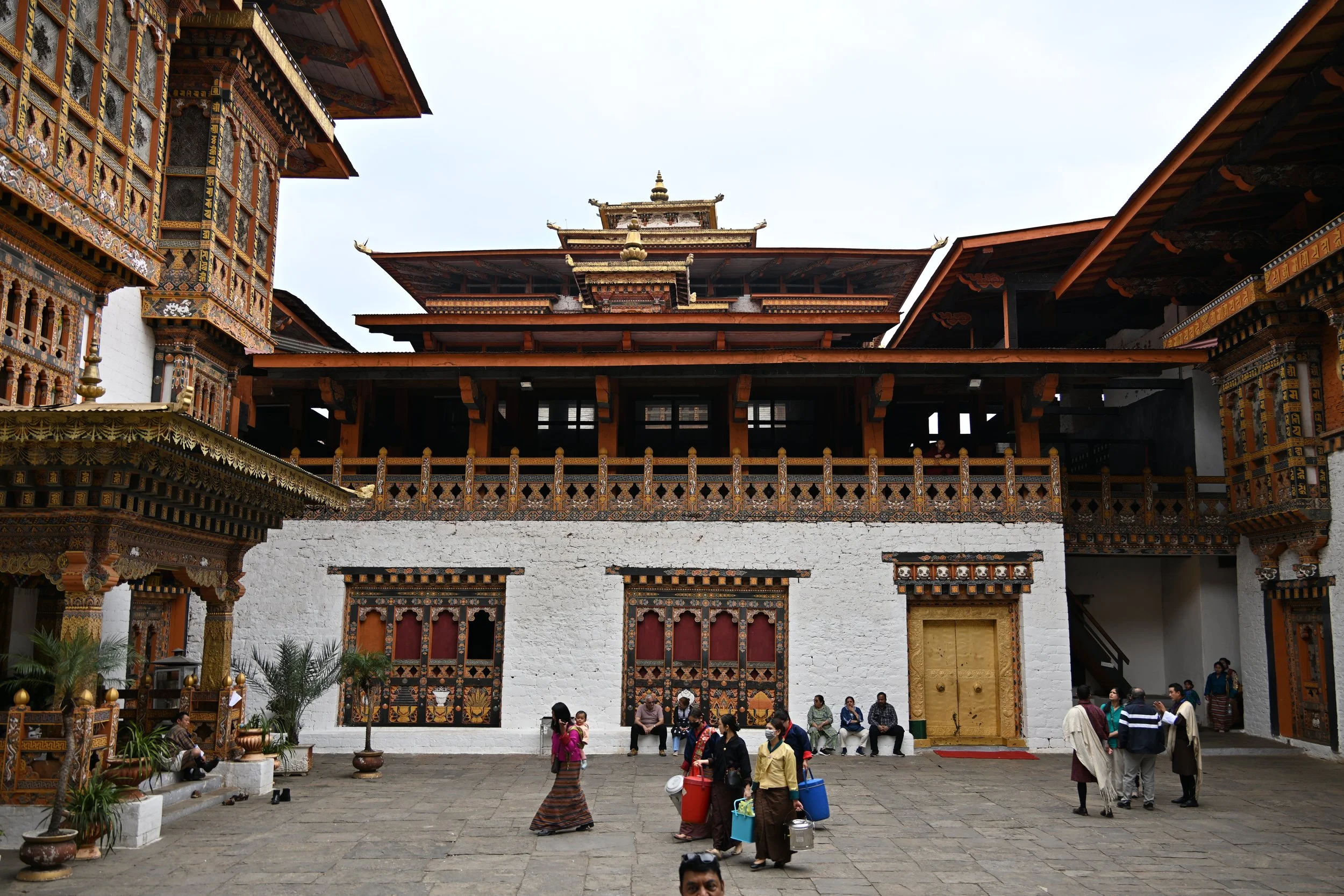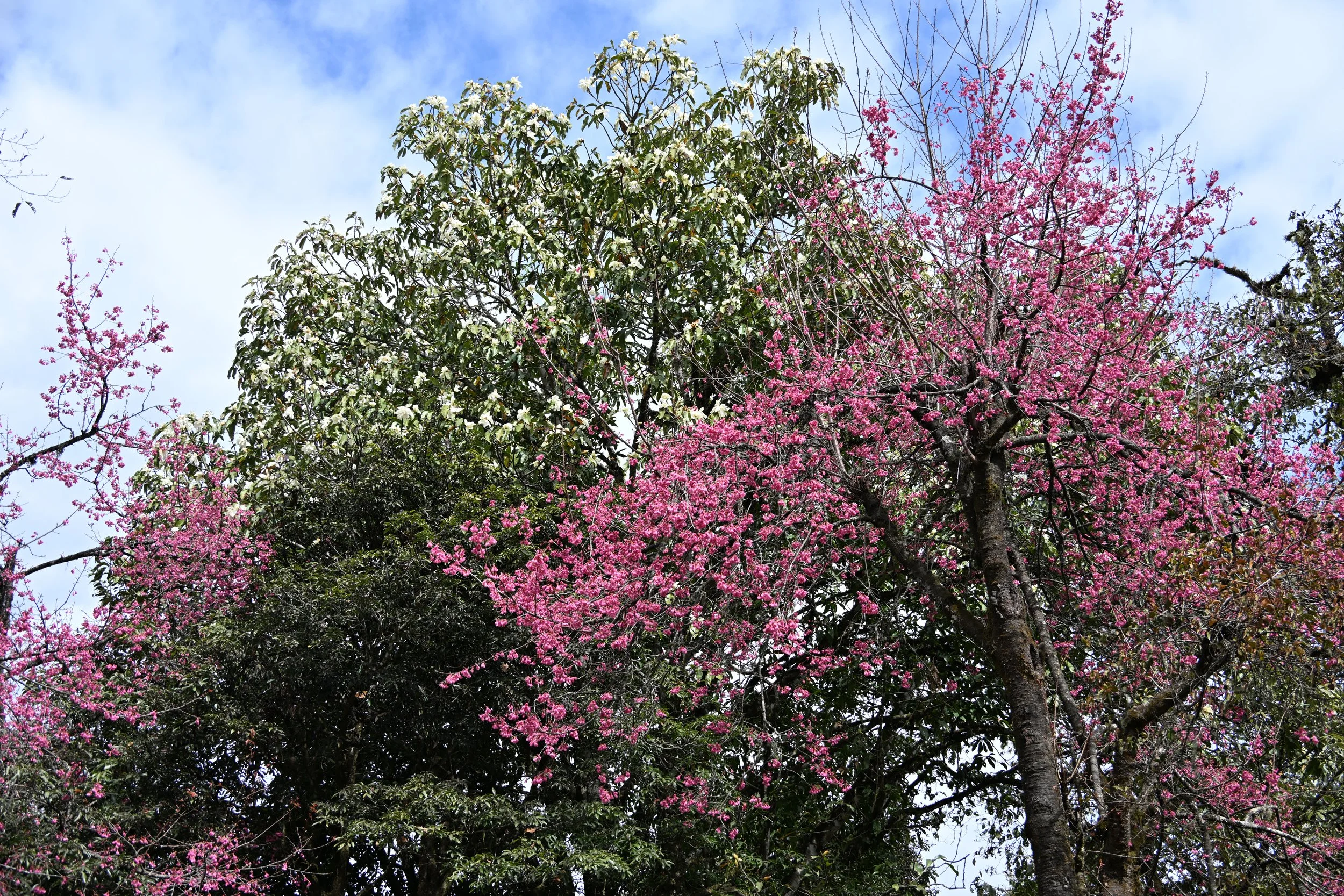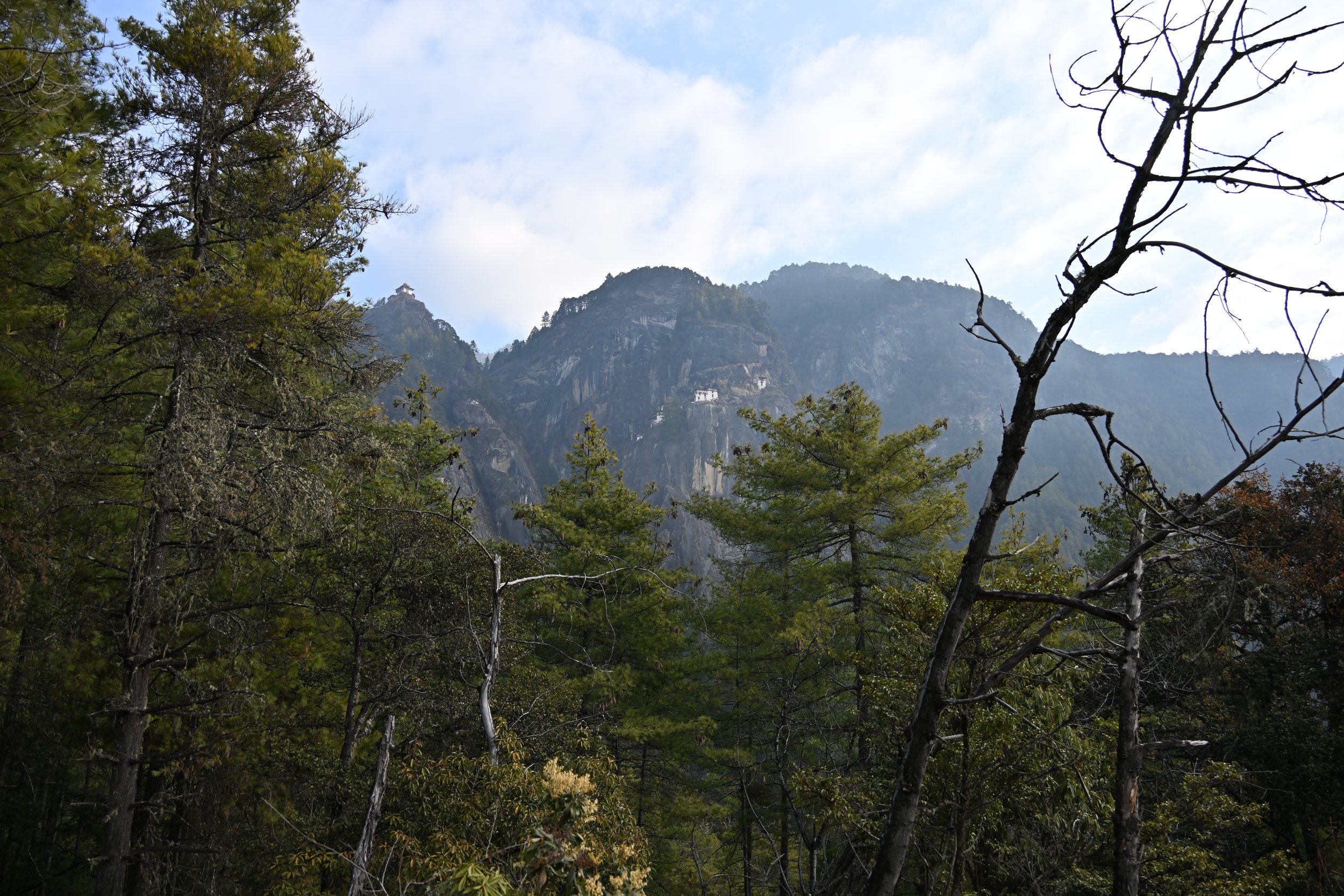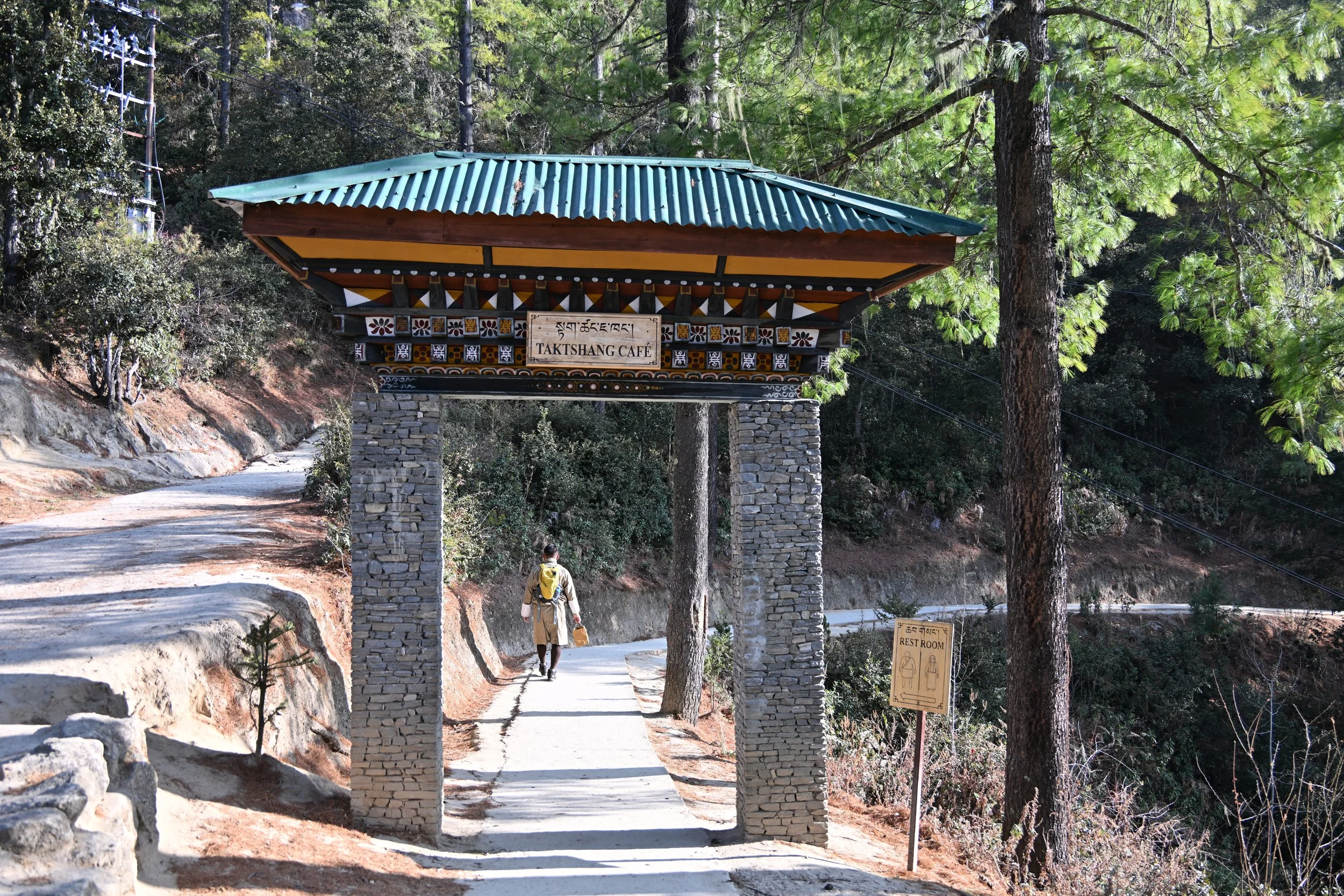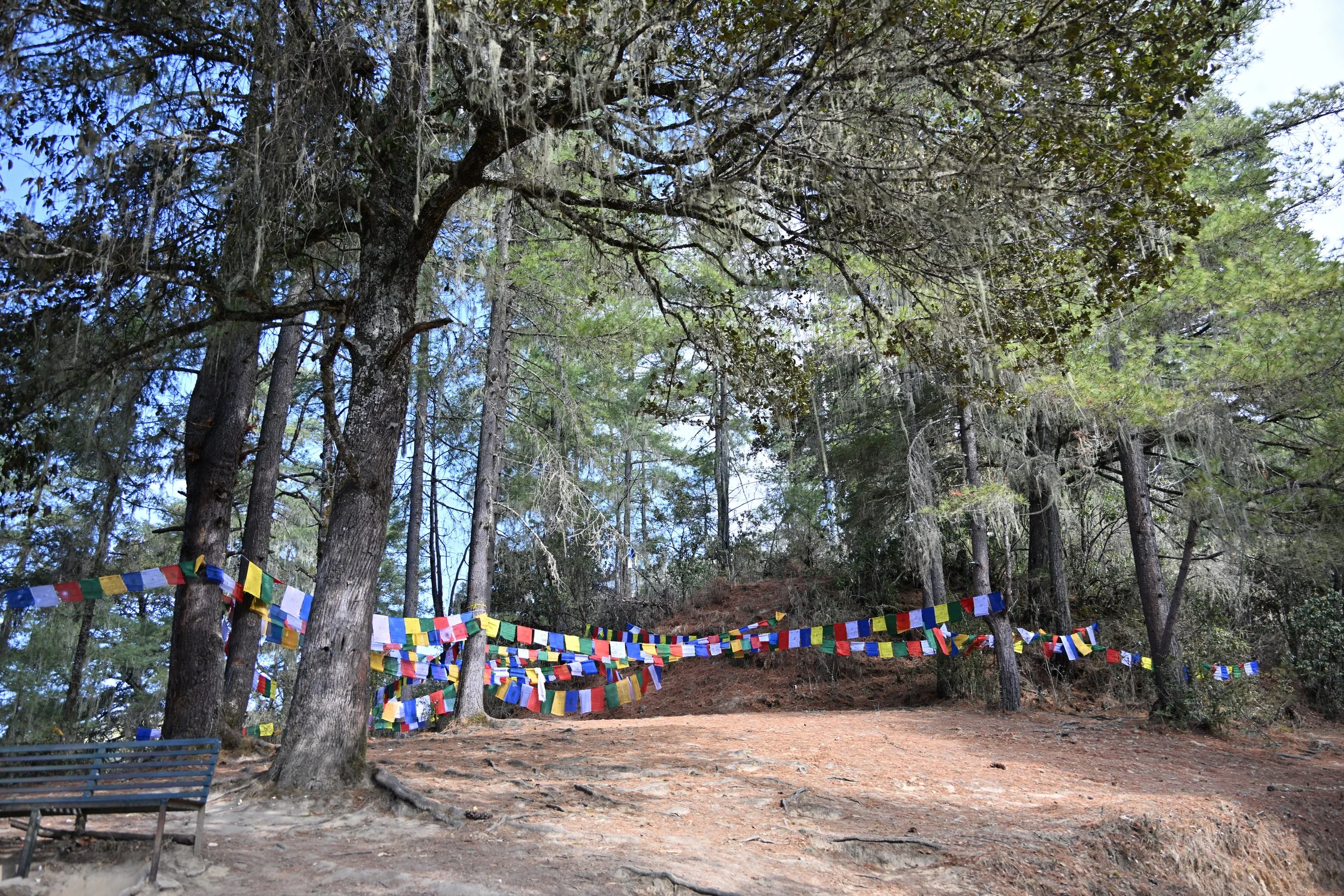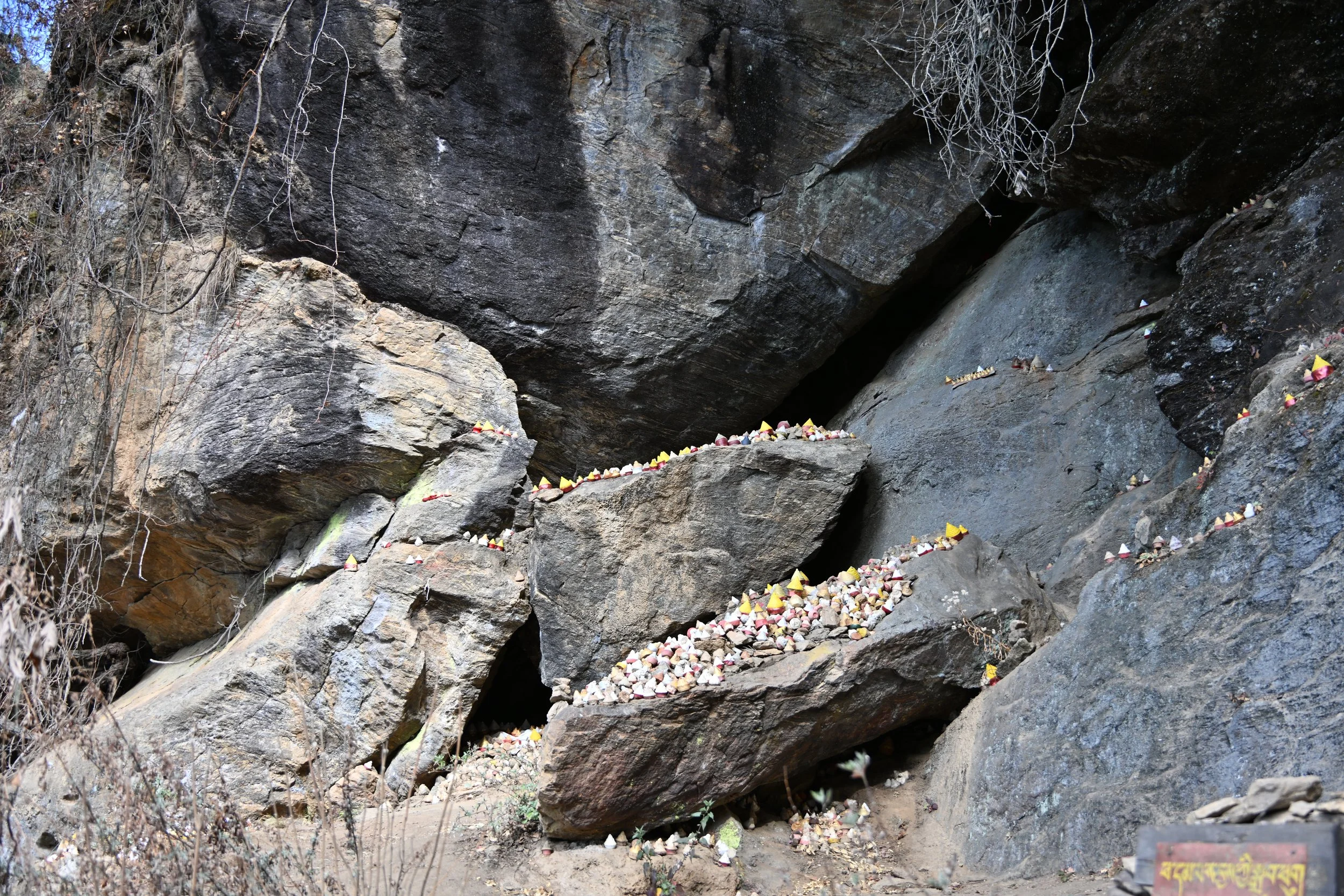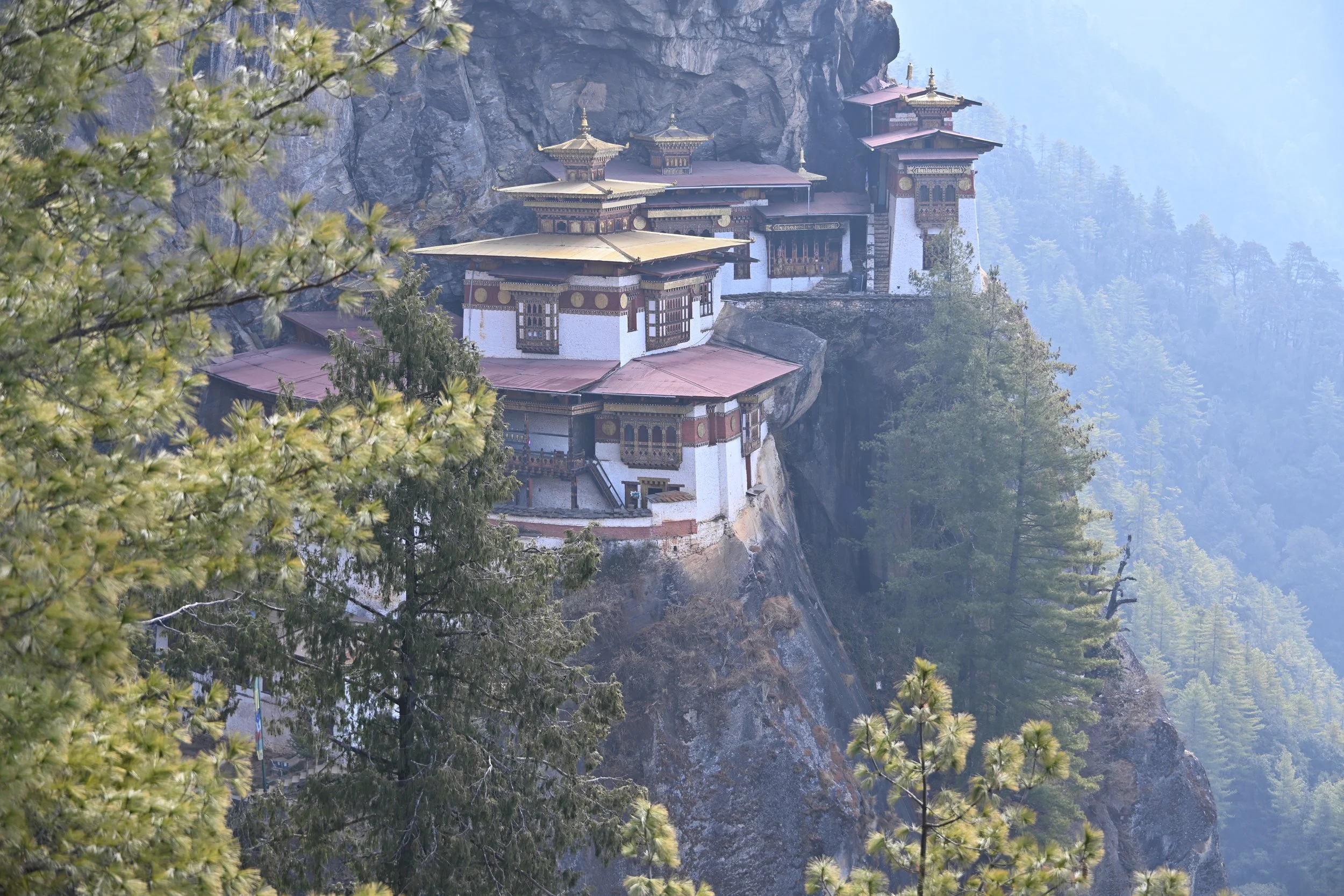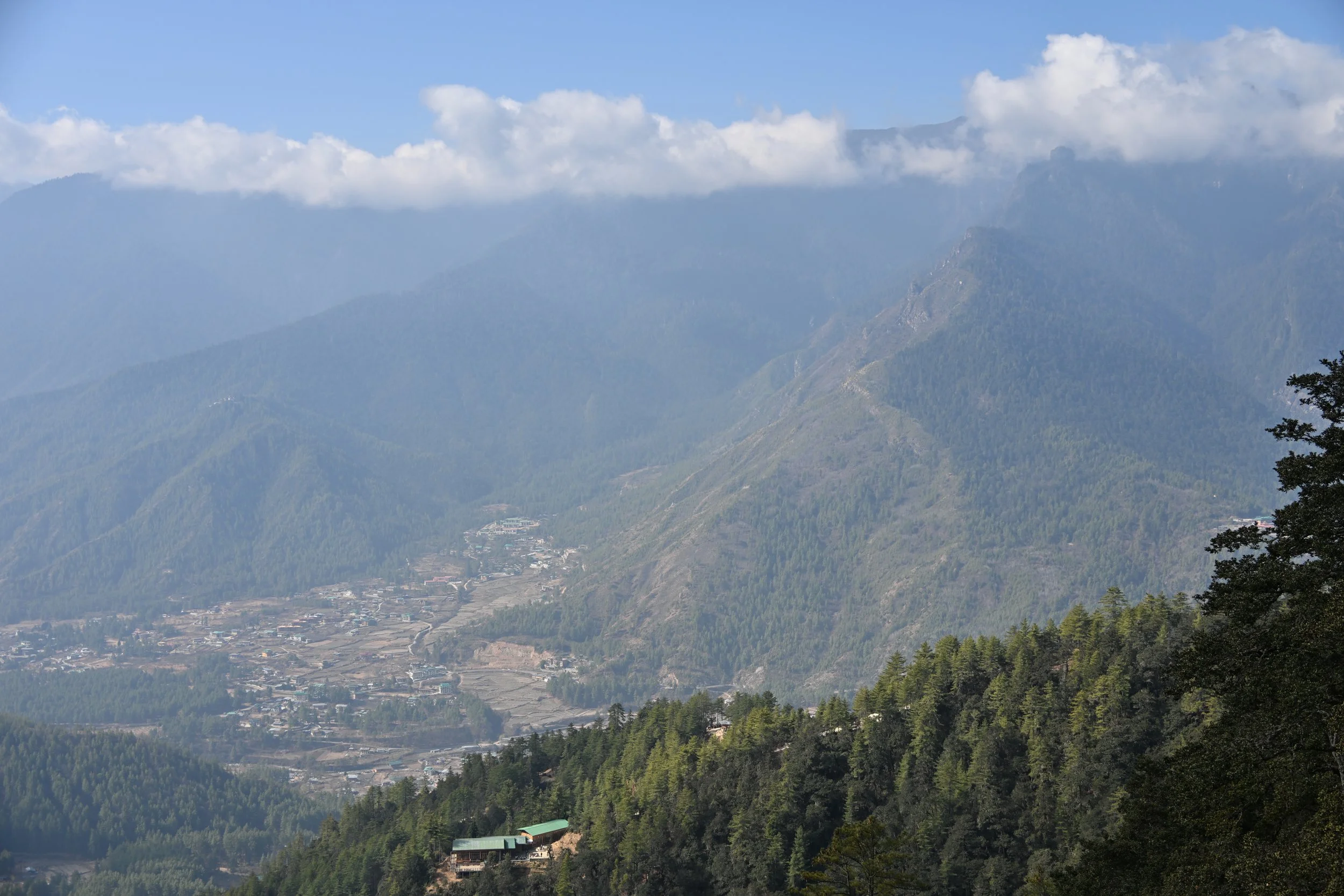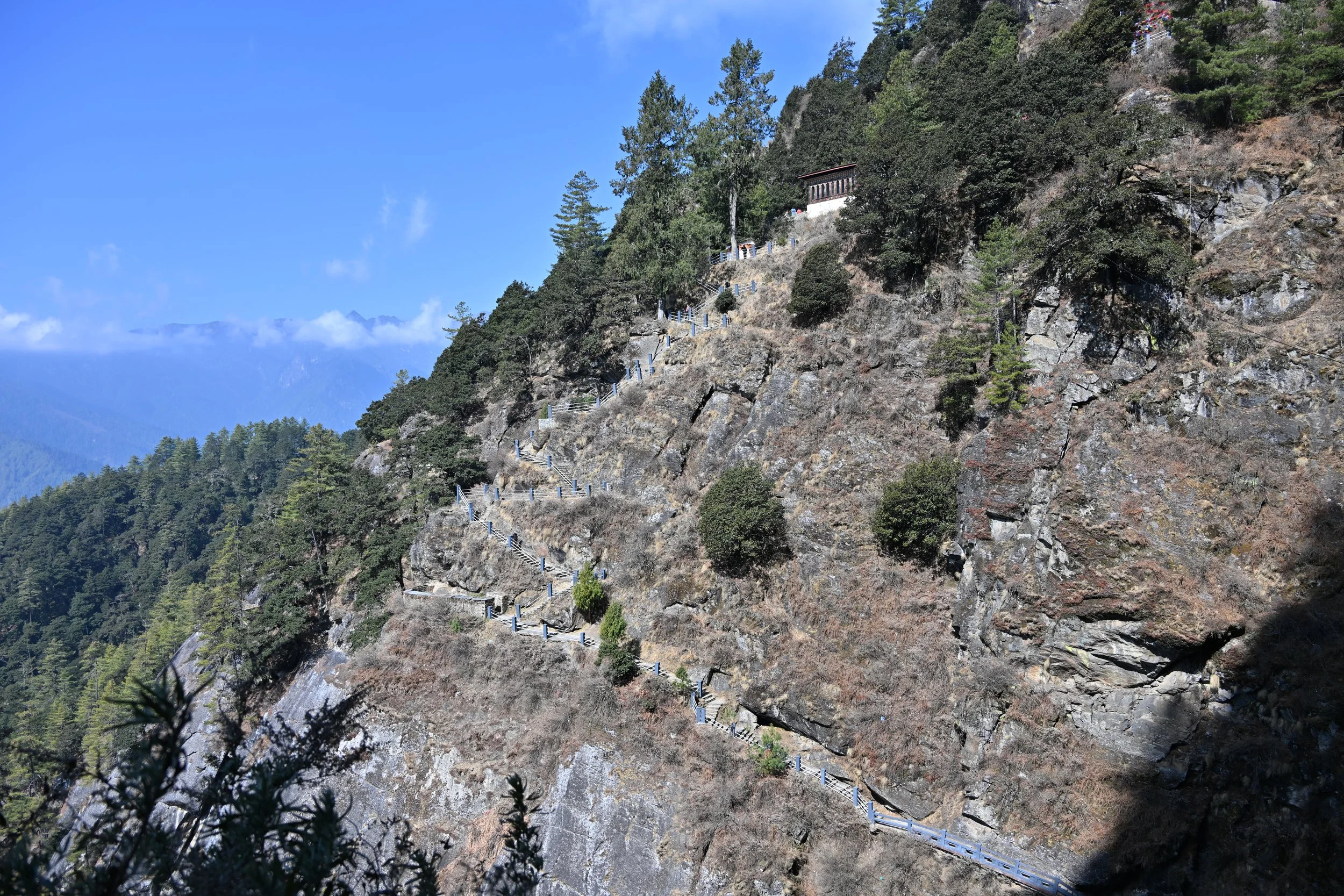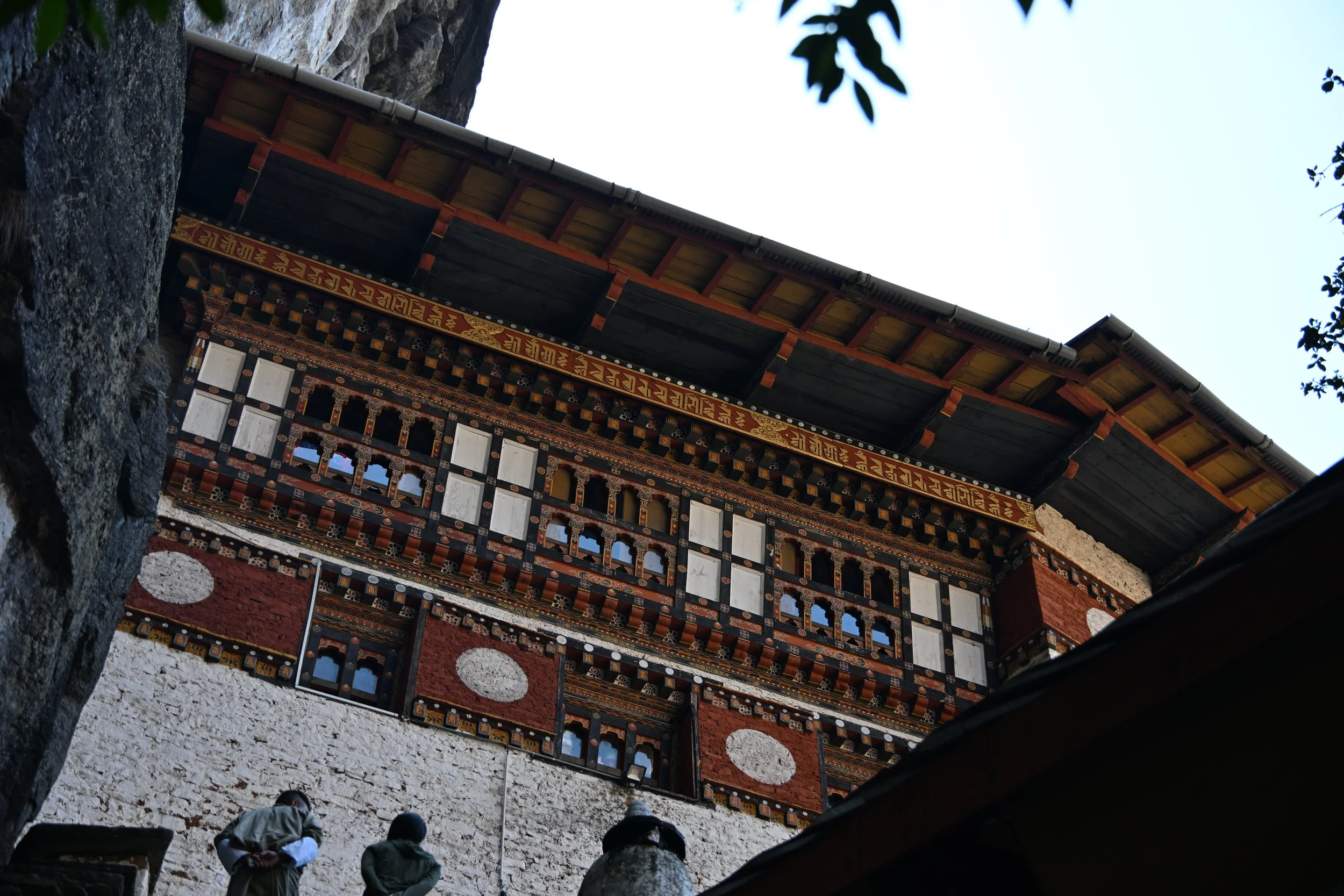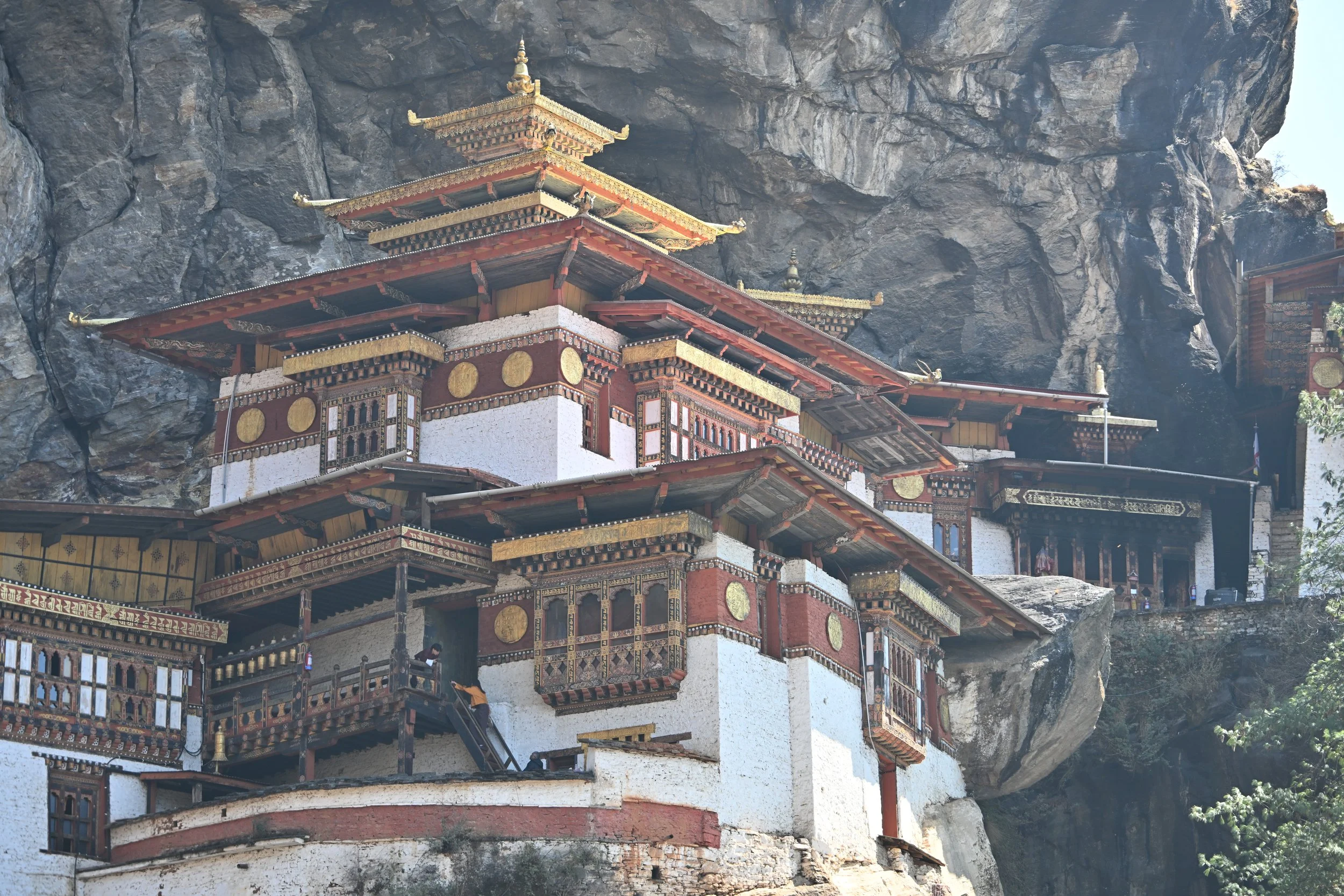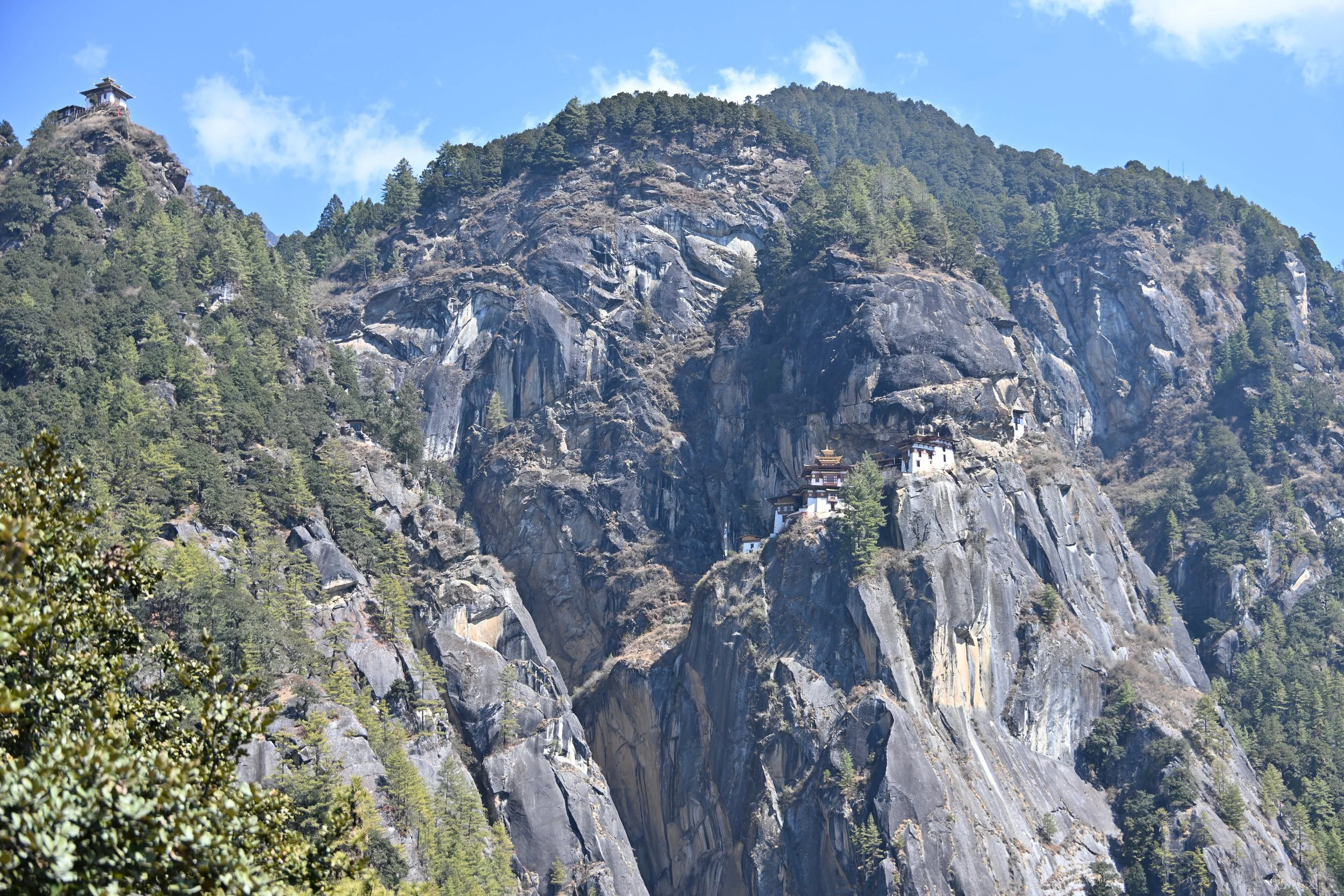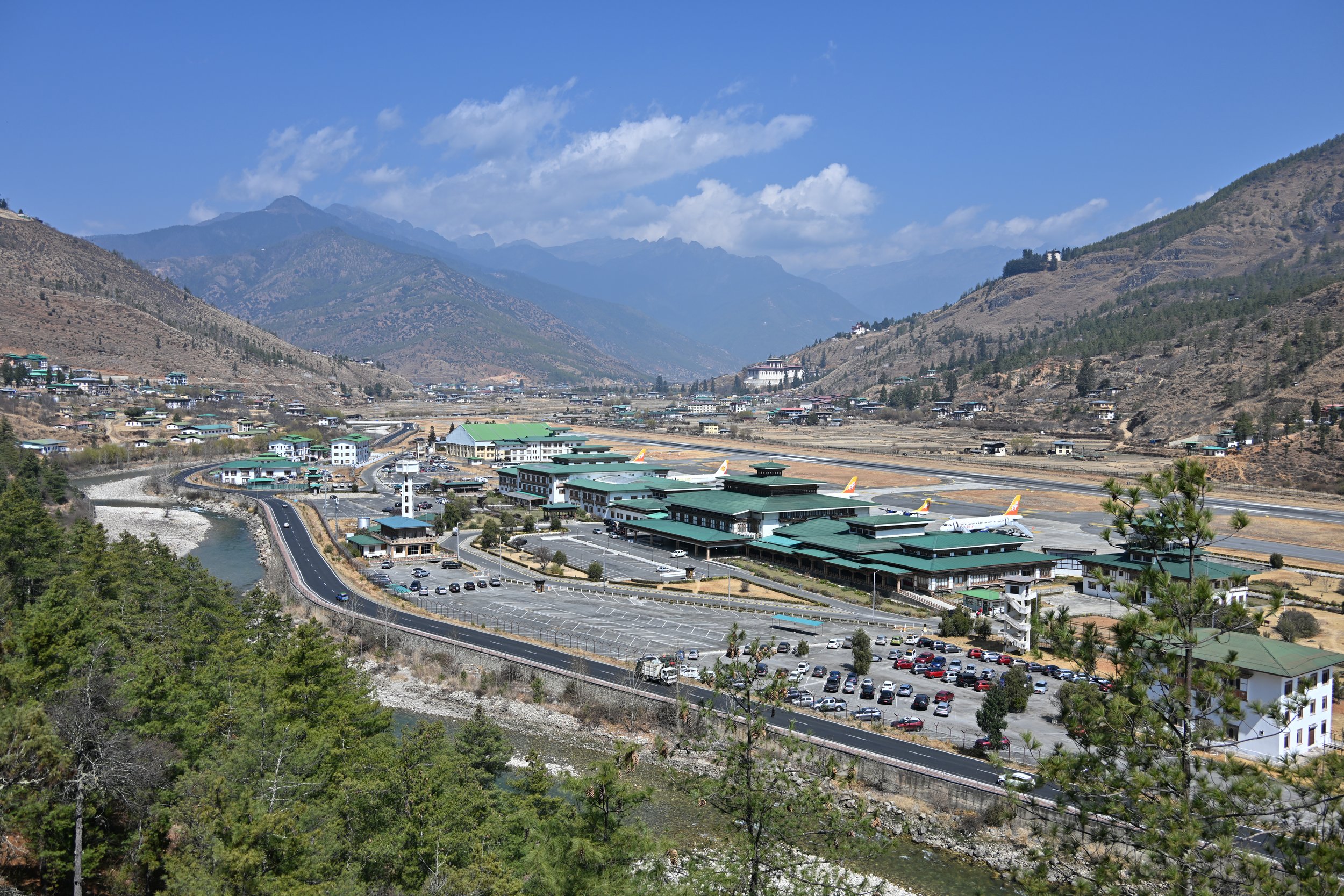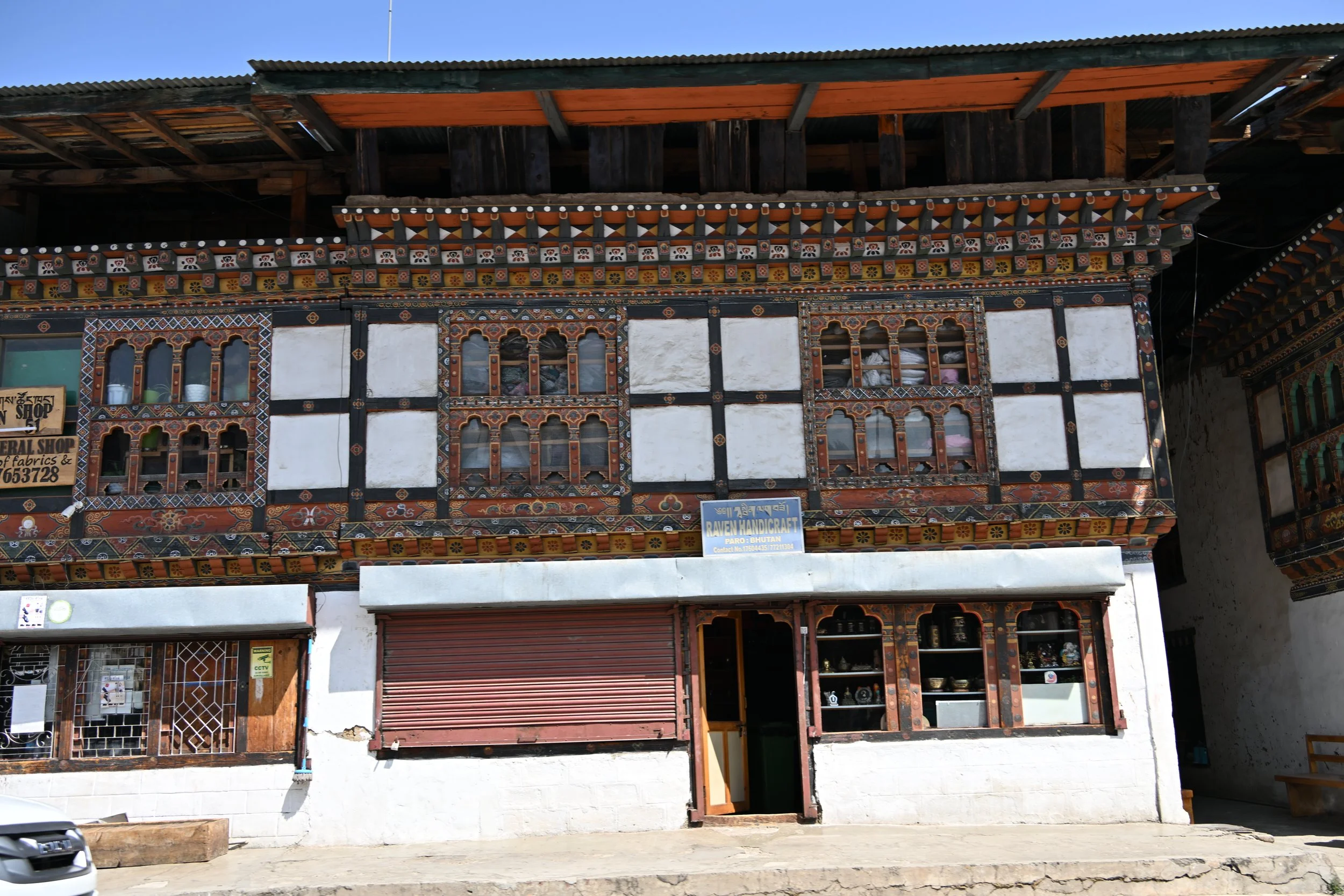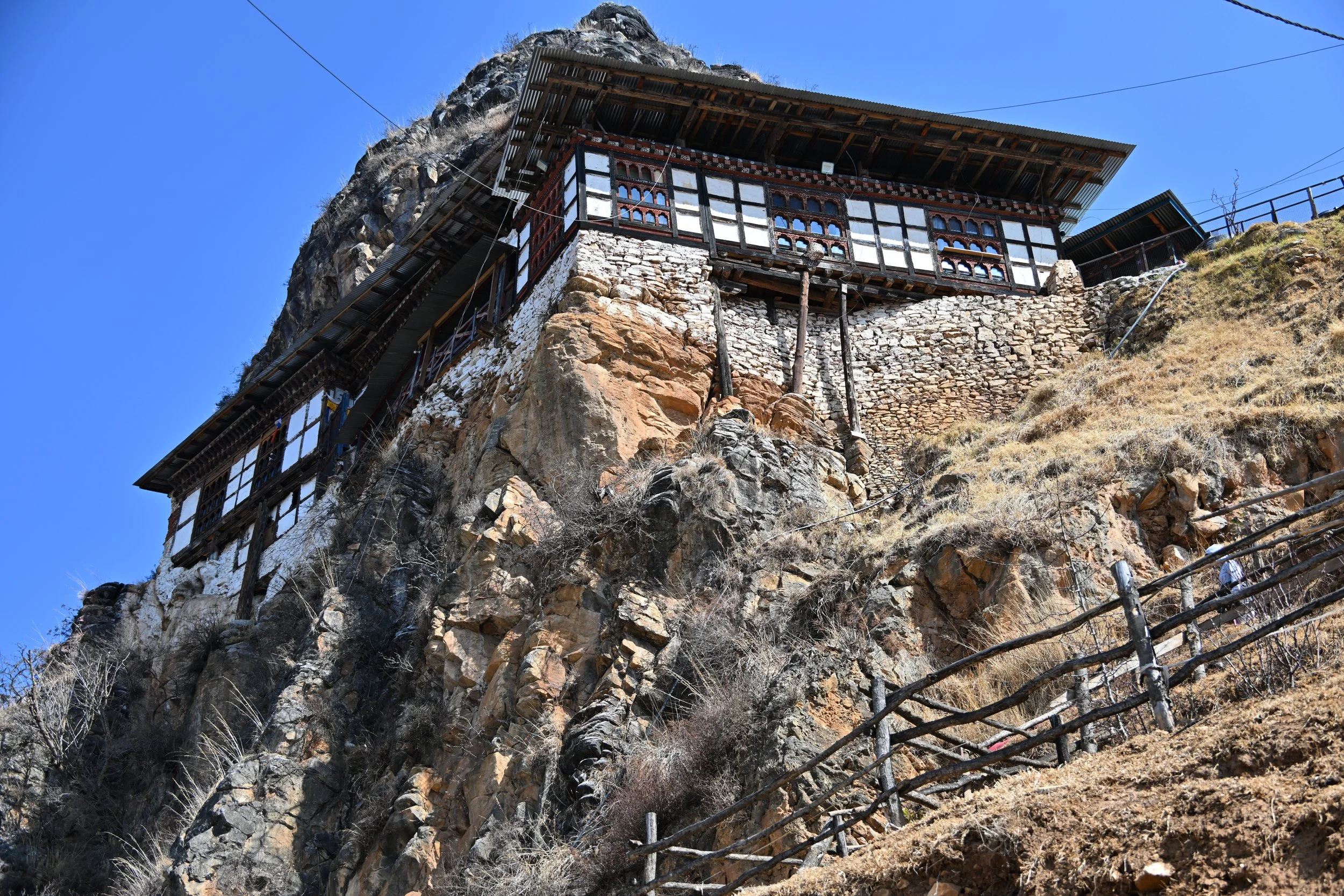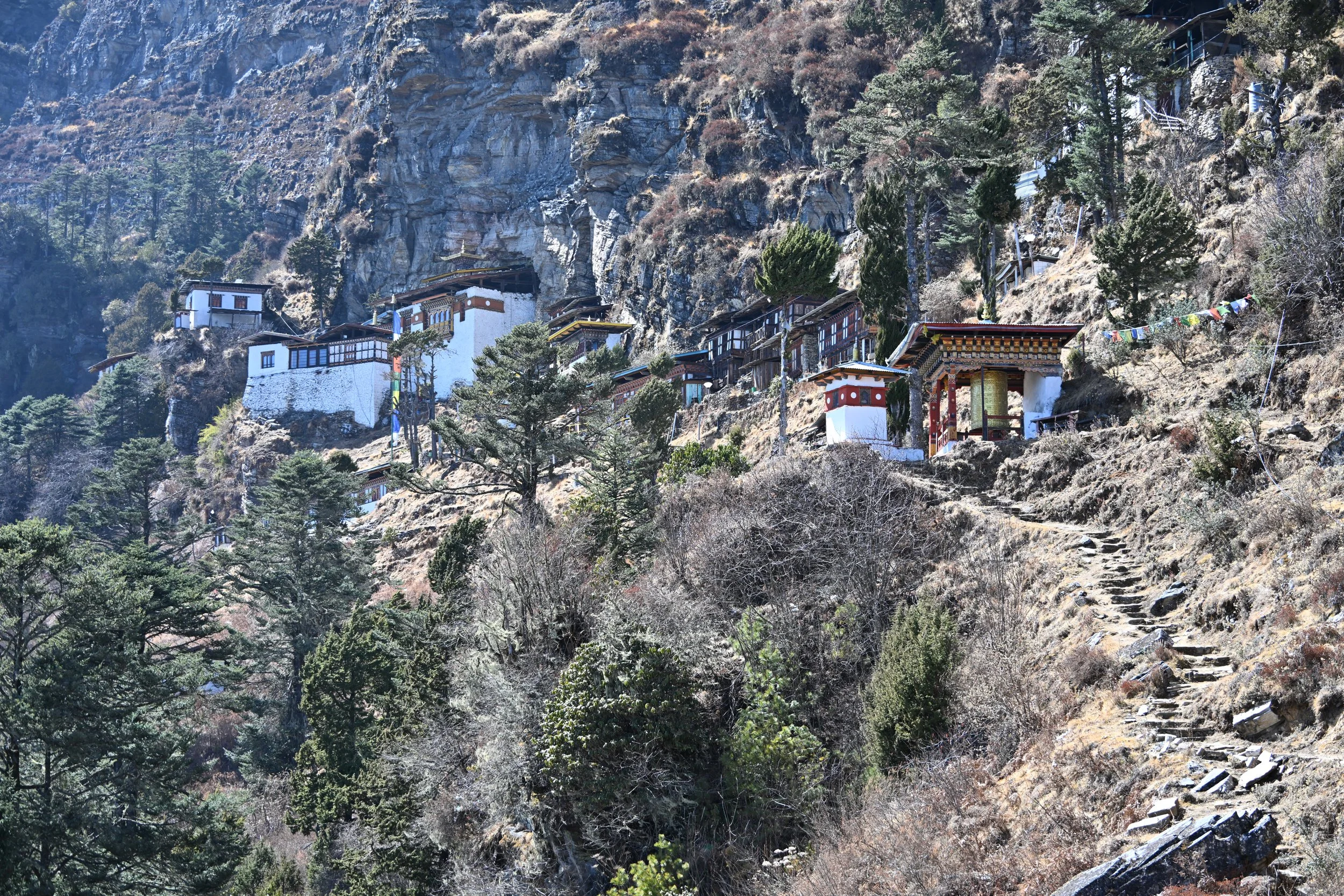Bhutan notes continued
I always try to get a photo of a country’s flag when we visit, so here is Bhutan’s -
The “Land of the Thunder Dragon” is depicted in the center, while the yellow represents the king as head of the government, and the orange represents Buddhism and the importance of religion to the people.
Now my next topic is food, starting with growing…
because so many of the fields need to be terraced, there is little mechanization.
… selling…
This was a massive 2 story market in Thimpu, hosting local farmers, which is open daily. Note the huge bags of red chiles in that front stall.
… and serving. The Bhutanese love their chiles! The picture below depicts a typical lunch…
the dish above the rice is solely sauteed peppers (and they’re very hot!)
… with rice being the largest portion, the majority of the dishes being vegetables, and for us Westerners, a small dish of some type of protein (often so tough or dry as to be almost inedible). There are many kinds of rice grown here, with Red being the main staple –
Because we were not visiting in the height of tourist season, Steve and I would often be the only ones eating in the large hotel dining room. This felt pretty odd. We would first be approached by staff, asking if we wanted “teacoffee?” - always run together like that - and be met with surprise when we asked for cold water. Once we were brought drinking glasses filled with hot water. “Milk tea” is offered when you visit a home, or as you first come in to a hotel and are getting registered. It was not very tasty to me, but “butter tea” was better. The names of the drinks describe their ingredients.
As I mentioned in my first post, staircases are just not a thing here, unless a building was built in the last 20? yrs or so. We learned to maneuver up and down the steep ladders pretty well, but this one, in a “heritage” house (read over 100 yrs old) really tested us -
the tread was so narrow that you couldn’t fit the entire ball of your foot on it
Besides little space heaters, wood stoves are used everywhere, including in our last hotel room stay in Bumthang -
We thoroughly enjoyed a Hot Stone Bath at our farmhouse stay. To heat the bath, stones were taken from a roaring fire and dropped into the water on the other side of the wooden partition. Wow, was that hot!
The stone column in the next picture shows the most tasteful example of a common good luck symbol, which we saw in many places in the country. It is based upon the legendary exploits of a 16th century guru commonly referred to as “the Divine Madman” -
The national dress, Kira for women and Gho for men, are worn daily, not just for festivals, and this is also the uniform for children at school.
the man in grey on the left of the picture is holding a handheld prayer wheel that is spun, in addition to holding his prayer beads
It was interesting to talk to some school children, noting no accent to their English (they sounded American), in contrast to their parents. This is probably because instruction at school is delivered in English.
Archery is the national sport and it was very interesting to watch a “pick-up” match between friends -
The targets were 150 meters (492 ft) apart!
You may have seen prayer flags in the background of some of my pictures. They are ubiquitous here.
They can be hung either vertically or horizontally. The 5 colors represent the 5 elements - water, wind, fire, living things and earth. Their primary purpose is to spread positive energy and compassion to all beings.
As threads are loosened from the edges of the cloths, the wind carries the prayers aloft. You commonly find them hung at mountain passes.
I will bring my reflections of this peaceful country to a fitting close:
